- Filter By:
-
-
Stock photos and images of username:kuremo
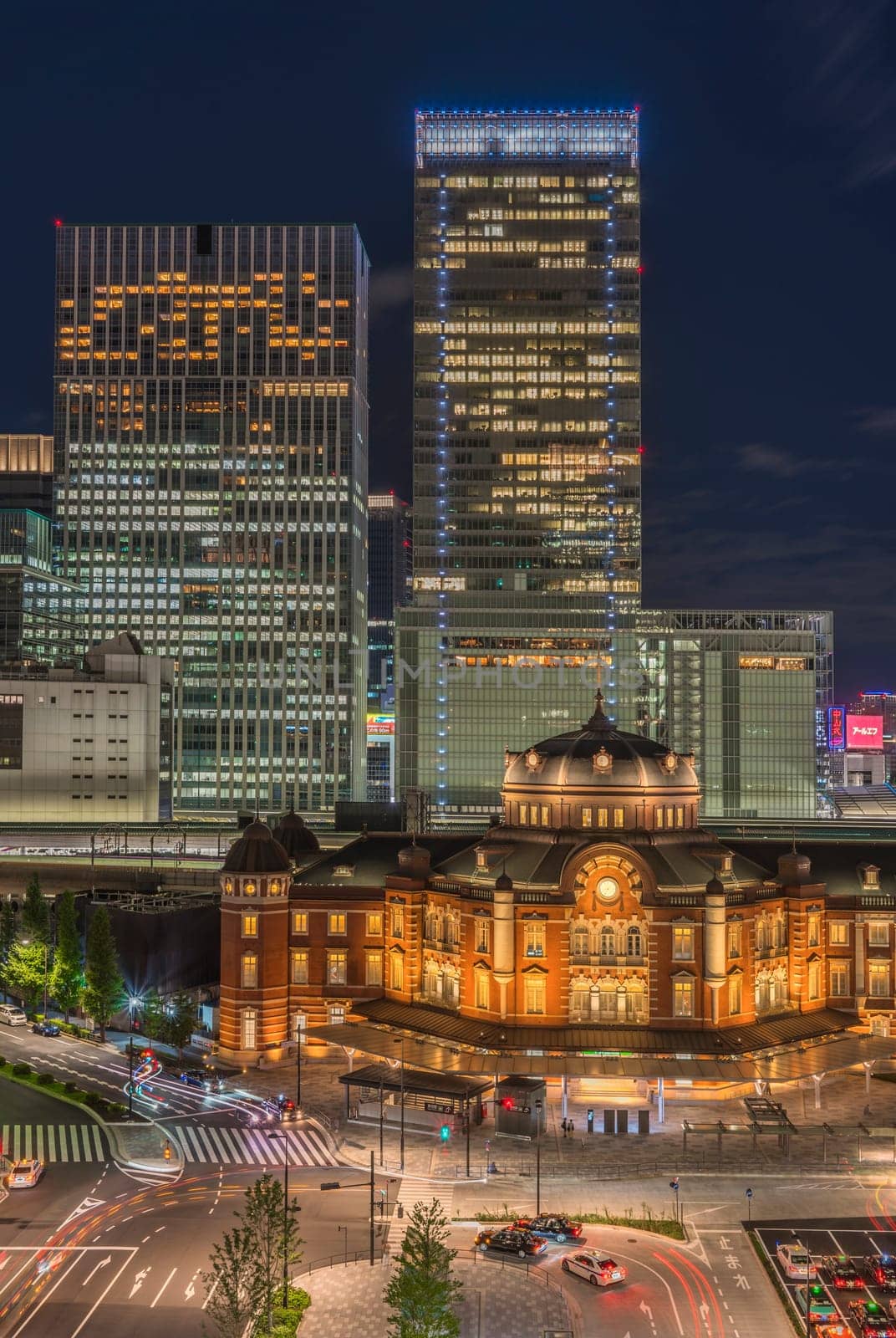
Marunouchi side of Tokyo railway station in the Chiyoda City, Tokyo, Japan. The station is divided into Marunouchi and Yaesu sides in its directional signage. The station first called Central Station was built in 1914 directly in front of the Imperial Pa
Editorial LicenseUsername
kuremoResolution
5302x7912pxMarunouchi side of Tokyo railway station in the Chiyoda City, Tokyo, Japan. The station is divided into Marunouchi and Yaesu sides in its directional signage. The station first called Central Station was built in 1914 directly in front of the Imperial Pa

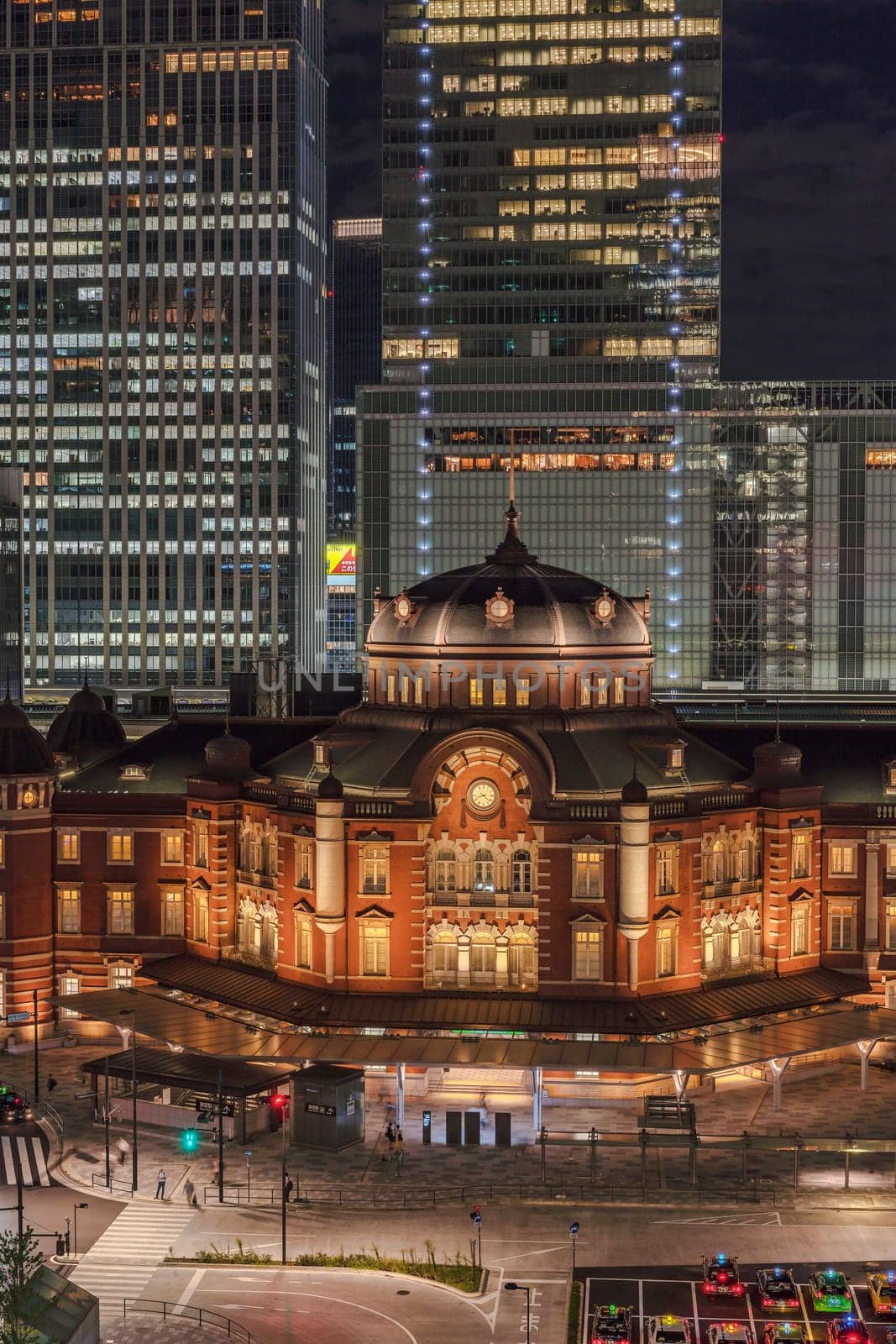
Marunouchi side of Tokyo railway station in the Chiyoda City, Tokyo, Japan. The station is divided into Marunouchi and Yaesu sides in its directional signage. The station first called Central Station was built in 1914 directly in front of the Imperial Pa
Editorial LicenseUsername
kuremoResolution
3182x4771pxMarunouchi side of Tokyo railway station in the Chiyoda City, Tokyo, Japan. The station is divided into Marunouchi and Yaesu sides in its directional signage. The station first called Central Station was built in 1914 directly in front of the Imperial Pa


Old vintage retro japanese movie posters on underpass Yurakucho Concourse wall under the railway line of the station Yurakucho. Japanese noodle stalls and sake bars revive the nostalgic years of Showa air with old samurai posters and placards glued to the
Editorial LicenseUsername
kuremoResolution
7952x5304pxOld vintage retro japanese movie posters on underpass Yurakucho Concourse wall under the railway line of the station Yurakucho. Japanese noodle stalls and sake bars revive the nostalgic years of Showa air with old samurai posters and placards glued to the

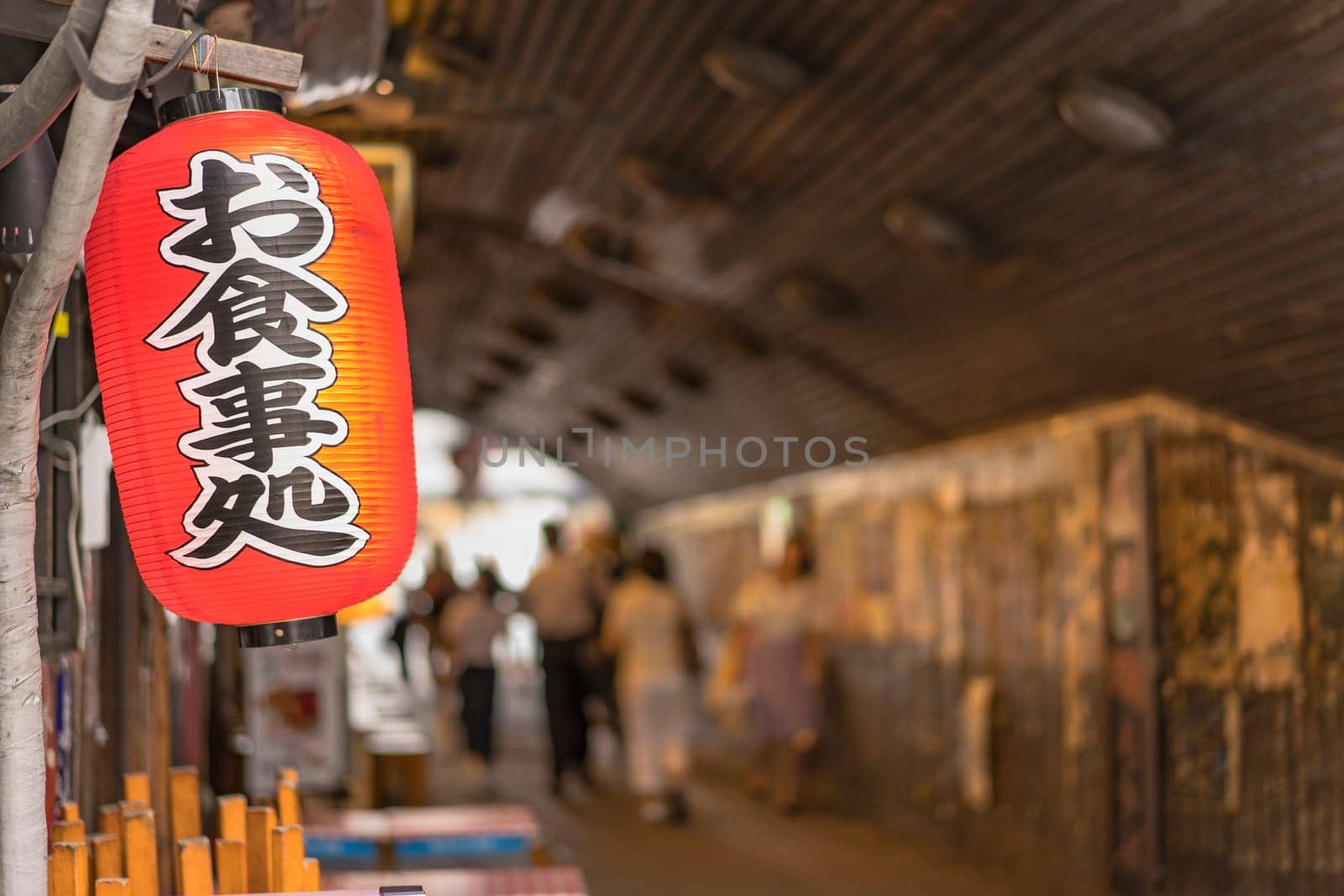
Traditional retro red rice paper lantern where it is written "Oshokujidokoro"" which means ""Meal"" on underpass Yurakucho Concourse wall under the railway line of the station Yurakucho. Japanese noodle stalls and sake bars revive the nostalgic years of Show"
Stock PhotoUsername
kuremoResolution
7952x5304pxTraditional retro red rice paper lantern where it is written "Oshokujidokoro"" which means ""Meal"" on underpass Yurakucho Concourse wall under the railway line of the station Yurakucho. Japanese noodle stalls and sake bars revive the nostalgic years of Show"


Old vintage retro japanese samurai movie posters and rusty metal advertising sign of old sake brand on underpass Yurakucho Concourse wall under the railway line of the station Yurakucho. Japanese noodle stalls and sake bars revive the nostalgic years of S
Editorial LicenseUsername
kuremoResolution
7952x5304pxOld vintage retro japanese samurai movie posters and rusty metal advertising sign of old sake brand on underpass Yurakucho Concourse wall under the railway line of the station Yurakucho. Japanese noodle stalls and sake bars revive the nostalgic years of S

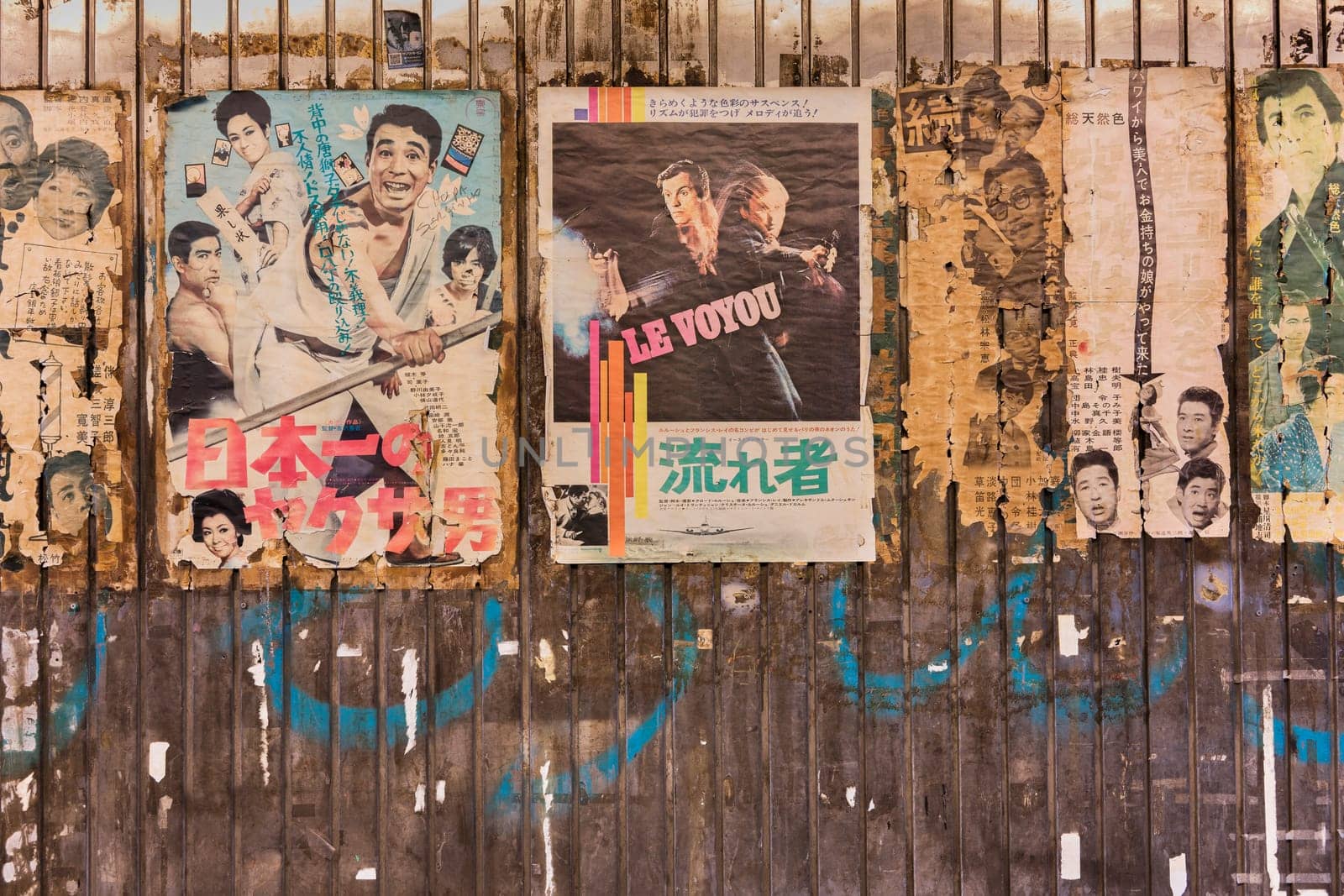
Old vintage retro japanese movie posters on underpass Yurakucho Concourse wall under the railway line of the station Yurakucho. Japanese noodle stalls and sake bars revive the nostalgic years of Showa air with old samurai posters, french nouvelle vague mo
Editorial LicenseUsername
kuremoResolution
7952x5304pxOld vintage retro japanese movie posters on underpass Yurakucho Concourse wall under the railway line of the station Yurakucho. Japanese noodle stalls and sake bars revive the nostalgic years of Showa air with old samurai posters, french nouvelle vague mo


Old vintage retro japanese movie posters on underpass Yurakucho Concourse wall under the railway line of the station Yurakucho. Japanese noodle stalls and sake bars revive the nostalgic years of Showa air with old samurai posters and placards glued to the
Editorial LicenseUsername
kuremoResolution
5304x7952pxOld vintage retro japanese movie posters on underpass Yurakucho Concourse wall under the railway line of the station Yurakucho. Japanese noodle stalls and sake bars revive the nostalgic years of Showa air with old samurai posters and placards glued to the

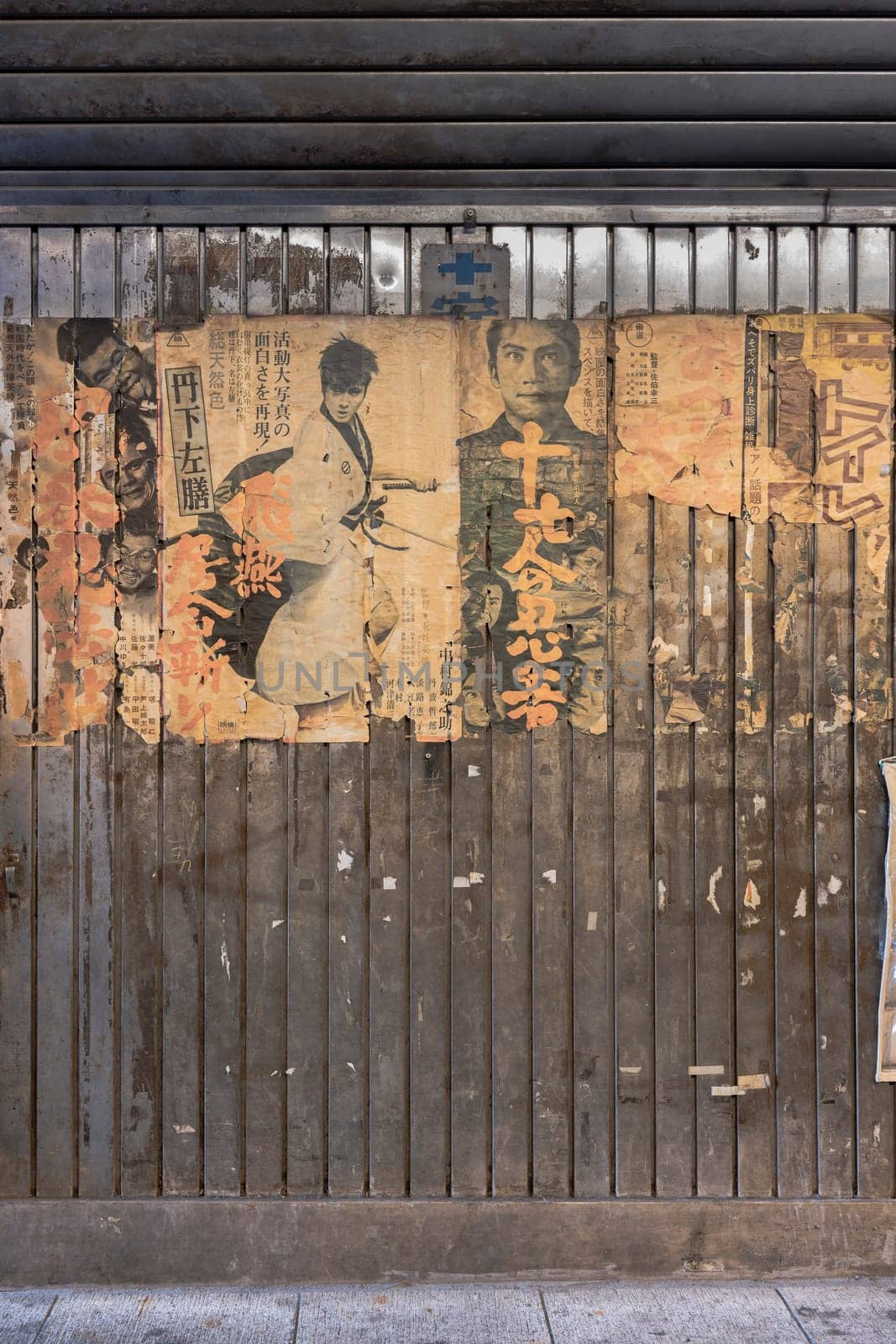
Untitled
Editorial LicenseUsername
kuremoResolution
5304x7952pxUntitled

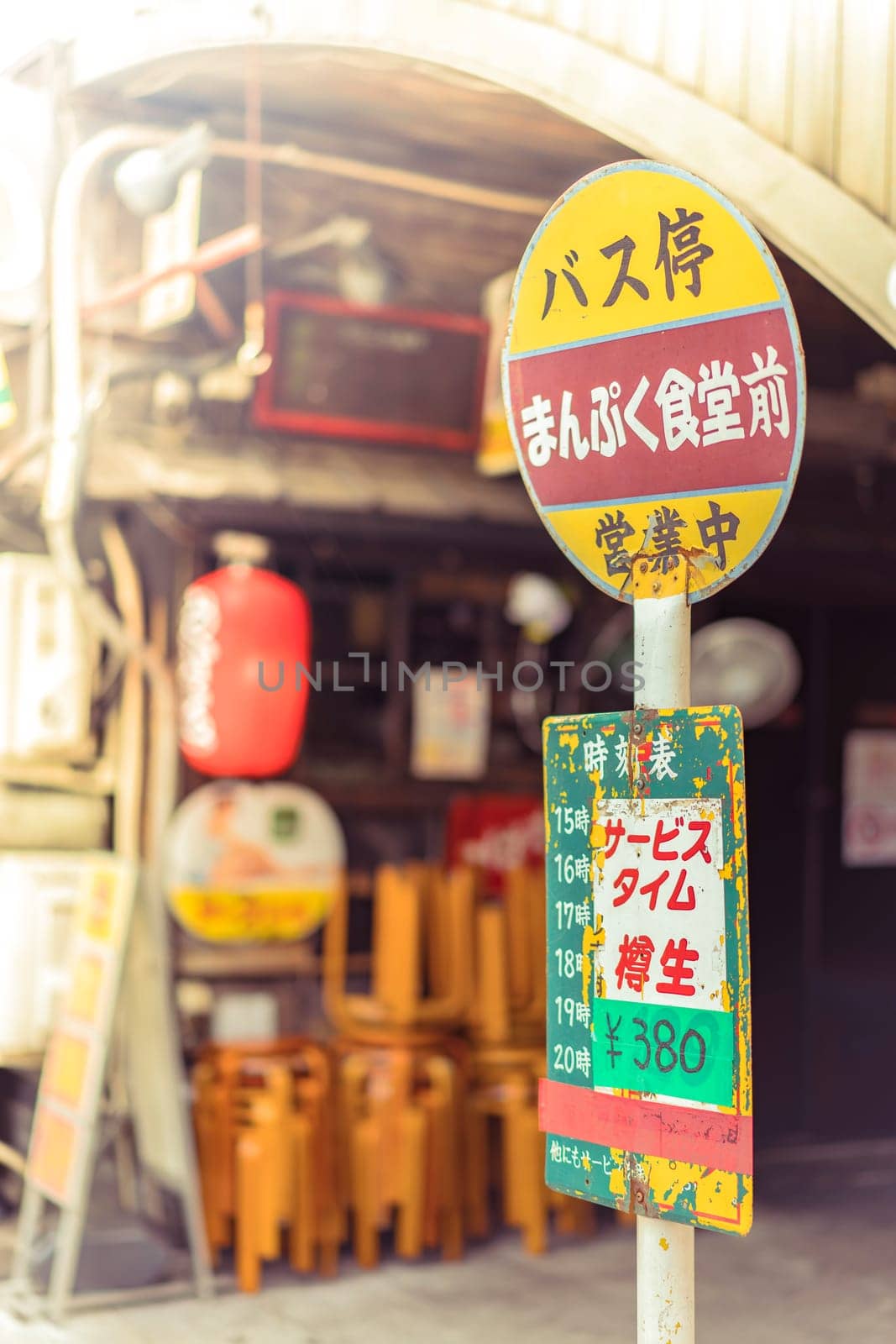
Restaurant sign immitating an old retro bus stop sign on underpass Yurakucho Concourse wall under the railway line of the station Yurakucho. Japanese noodle stalls and sake bars revive the nostalgic years of Showa air with old posters and placards glued t
Stock PhotoUsername
kuremoResolution
5304x7952pxRestaurant sign immitating an old retro bus stop sign on underpass Yurakucho Concourse wall under the railway line of the station Yurakucho. Japanese noodle stalls and sake bars revive the nostalgic years of Showa air with old posters and placards glued t


Oji station JR Keihin Tohoku Line in the Kita district, north of Tokyo. The pedestrian walkway spans the intersection of Meiji Avenue where the Ojiekimae station of the Toden Arakawa tram line is famous for its retro style.
Editorial LicenseUsername
kuremoResolution
12113x5289pxOji station JR Keihin Tohoku Line in the Kita district, north of Tokyo. The pedestrian walkway spans the intersection of Meiji Avenue where the Ojiekimae station of the Toden Arakawa tram line is famous for its retro style.
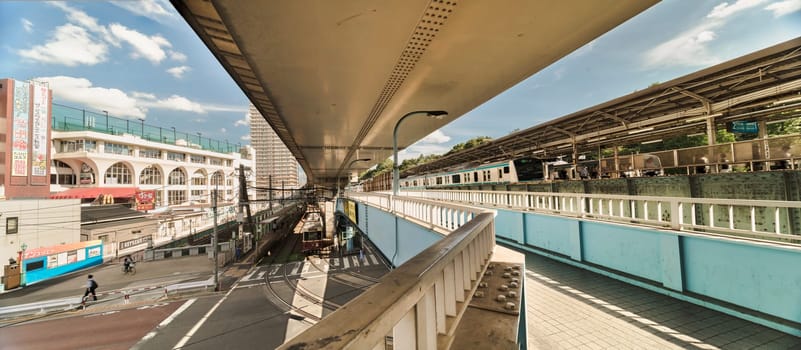
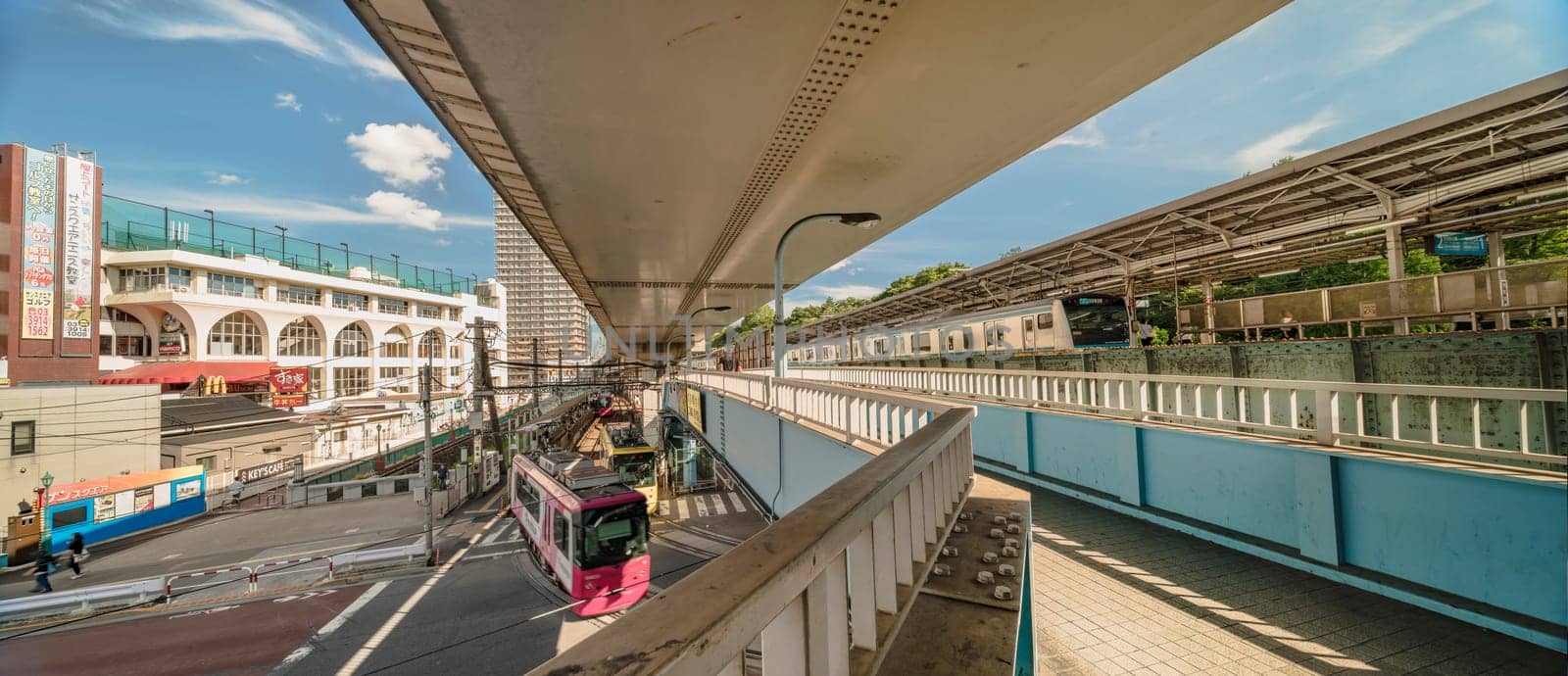
Oji station JR Keihin Tohoku Line in the Kita district, north of Tokyo. The pedestrian walkway spans the intersection of Meiji Avenue where the Ojiekimae station of the Toden Arakawa tram line is famous for its retro style.
Editorial LicenseUsername
kuremoResolution
12179x5249pxOji station JR Keihin Tohoku Line in the Kita district, north of Tokyo. The pedestrian walkway spans the intersection of Meiji Avenue where the Ojiekimae station of the Toden Arakawa tram line is famous for its retro style.


Meiji Avenue with the Ojiekimae station of the Toden Arakawa tram line in the Kita district, north of Tokyo.
Editorial LicenseUsername
kuremoResolution
7249x4835pxMeiji Avenue with the Ojiekimae station of the Toden Arakawa tram line in the Kita district, north of Tokyo.
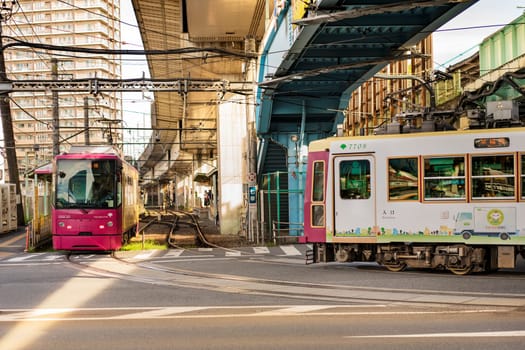

Oji station JR Keihin Tohoku Line in the Kita district, north of Tokyo. The pedestrian walkway spans the intersection of Meiji Avenue where the Ojiekimae station of the Toden Arakawa tram line is famous for its retro style.
Editorial LicenseUsername
kuremoResolution
12114x5291pxOji station JR Keihin Tohoku Line in the Kita district, north of Tokyo. The pedestrian walkway spans the intersection of Meiji Avenue where the Ojiekimae station of the Toden Arakawa tram line is famous for its retro style.
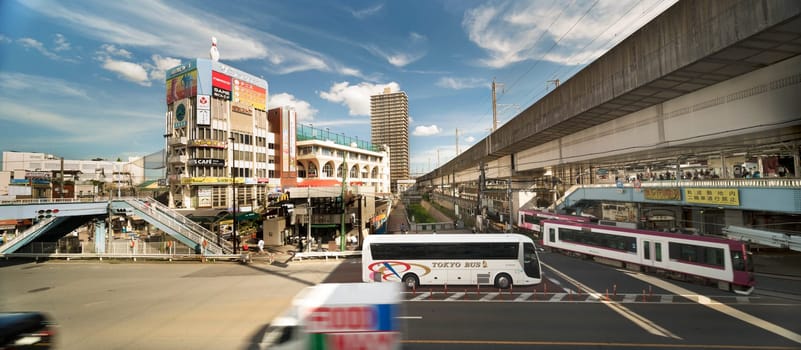
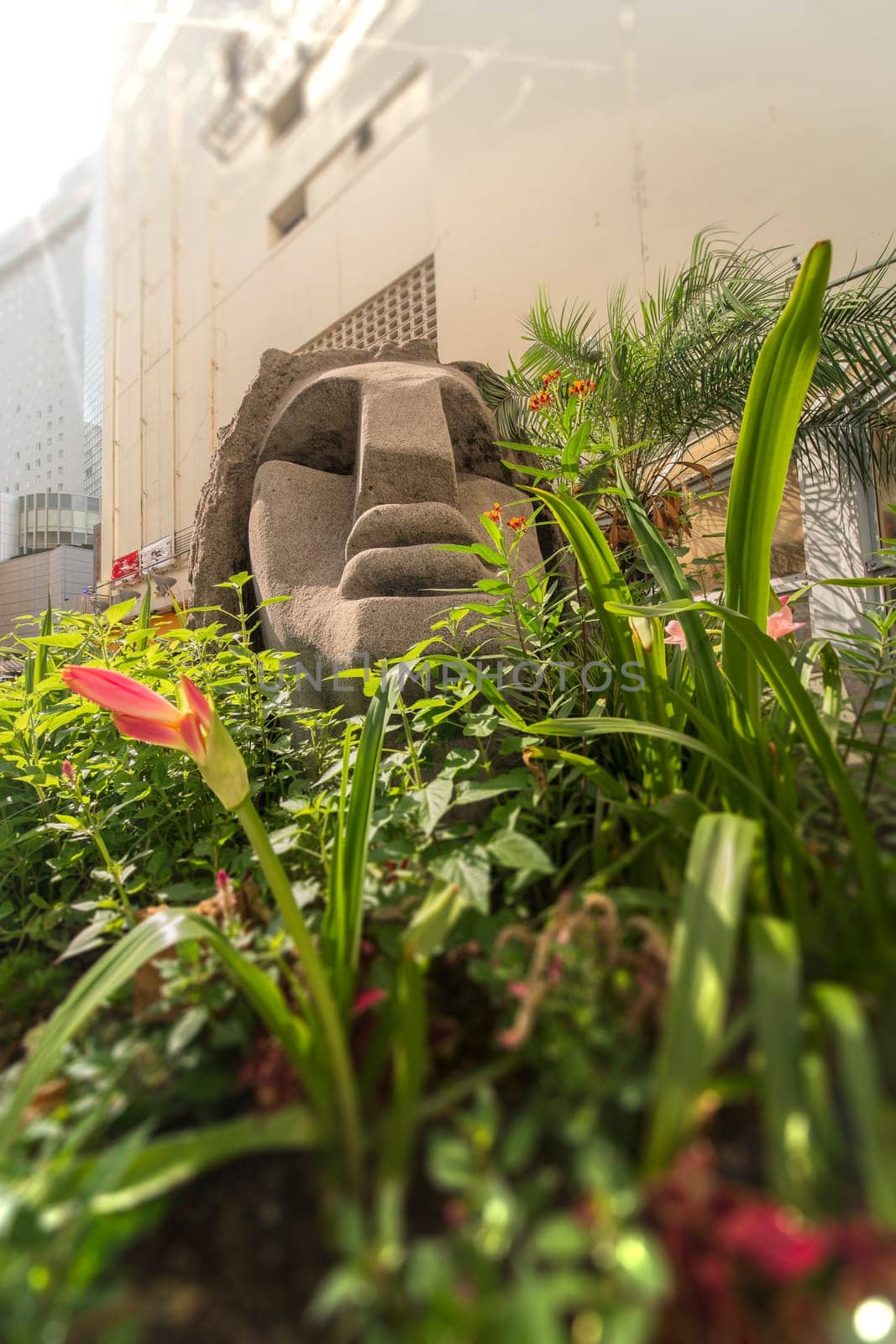
Close-up on a statue of a Moai head surrounded by tropical flowers at the west exit of Shibuya Station in Tokyo, Japan.
Editorial LicenseUsername
kuremoResolution
5304x7952pxClose-up on a statue of a Moai head surrounded by tropical flowers at the west exit of Shibuya Station in Tokyo, Japan.

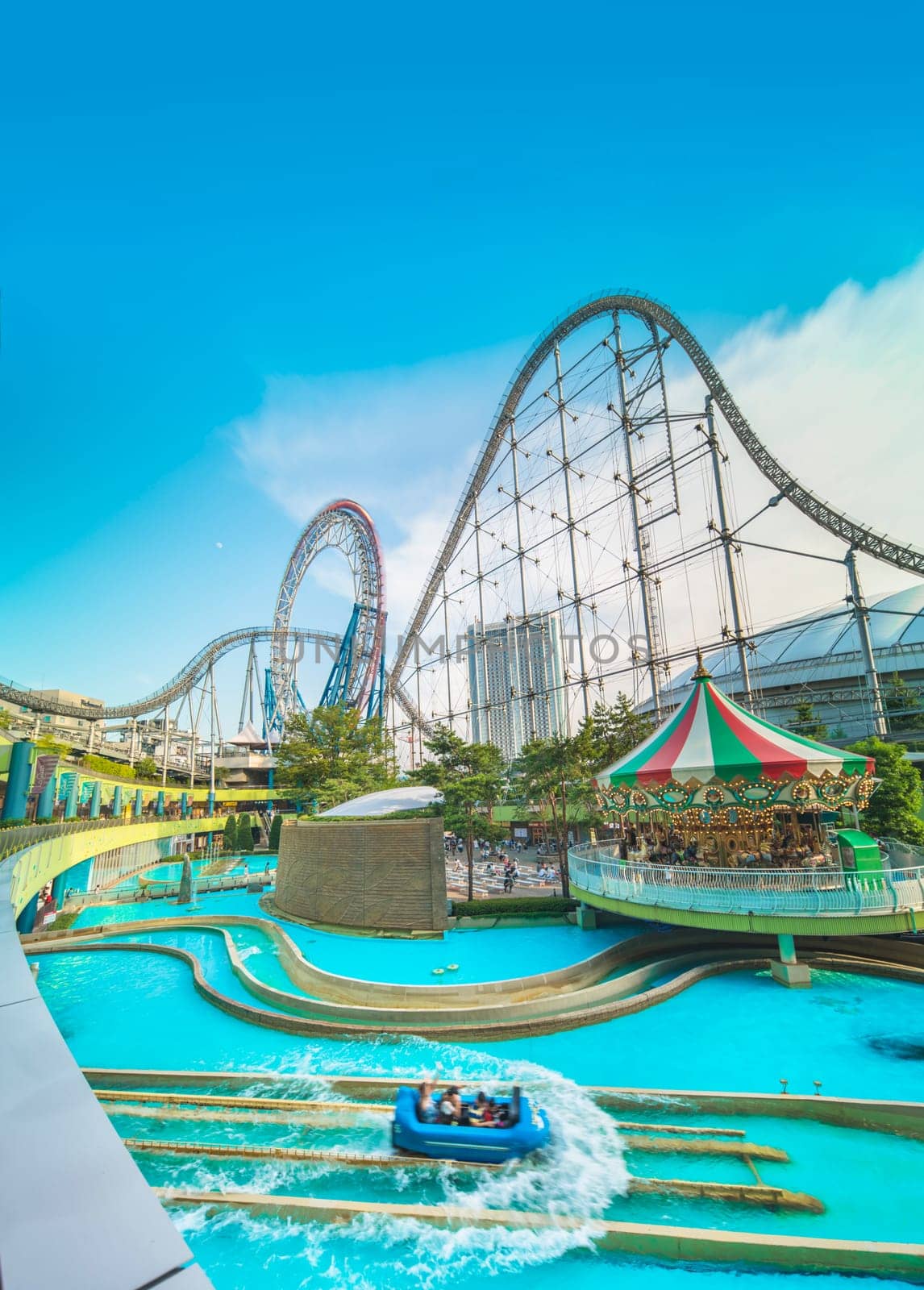
Laqua Tokyo Dome City Mall with its impressive roller coaster integrated in the gallery of its shopping center with a carousel and water coaster under the summer blue sky.
Editorial LicenseUsername
kuremoResolution
7926x11063pxLaqua Tokyo Dome City Mall with its impressive roller coaster integrated in the gallery of its shopping center with a carousel and water coaster under the summer blue sky.

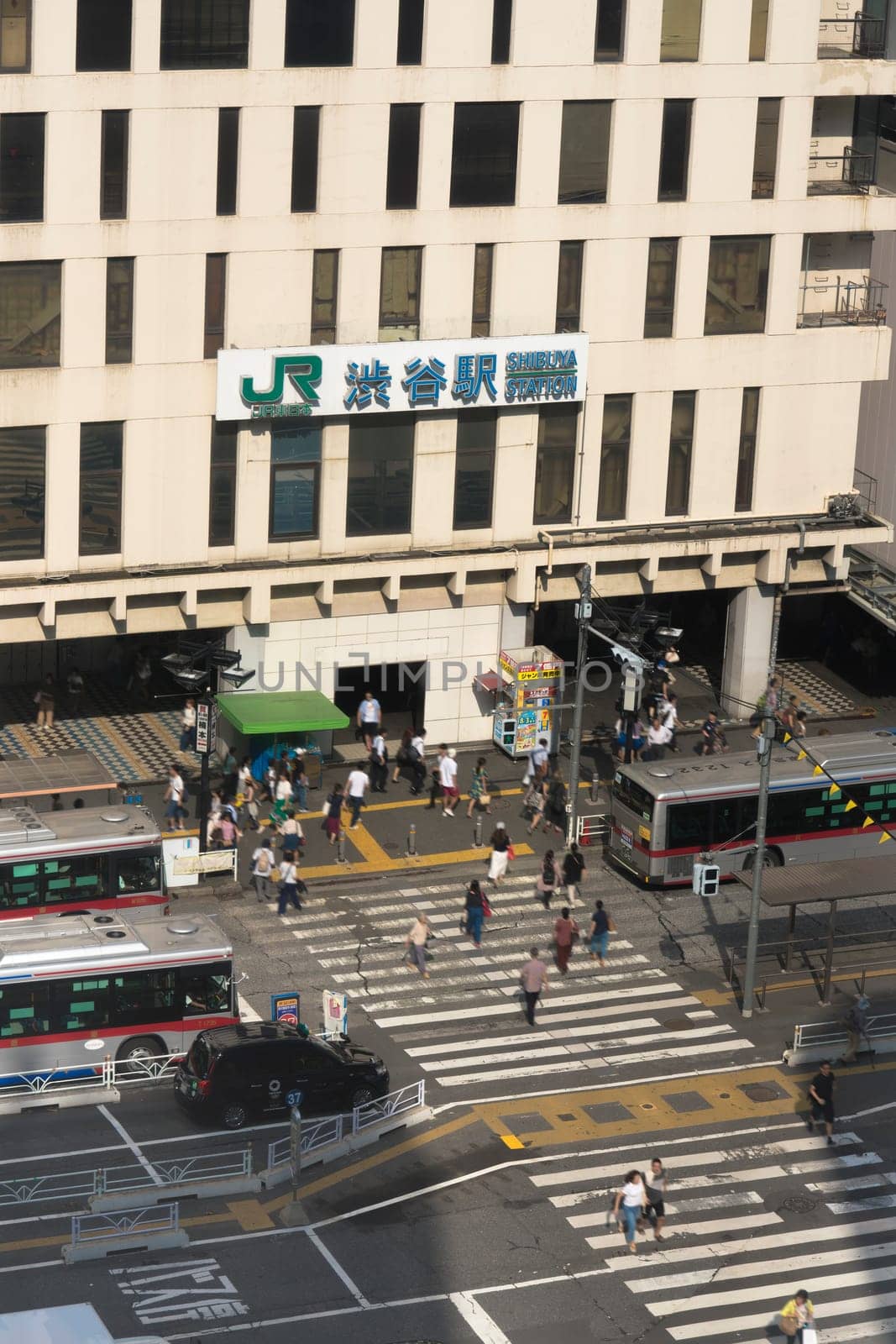
View of the southern exit of Shibuya Station, famous for its moai statue, with buses and taxis stopped at the bus terminal
Editorial LicenseUsername
kuremoResolution
5304x7952pxView of the southern exit of Shibuya Station, famous for its moai statue, with buses and taxis stopped at the bus terminal


Close-up on a statue of a Moai head surrounded by tropical flowers at the west exit of Shibuya Station in Tokyo, Japan.
Editorial LicenseUsername
kuremoResolution
7952x5304pxClose-up on a statue of a Moai head surrounded by tropical flowers at the west exit of Shibuya Station in Tokyo, Japan.
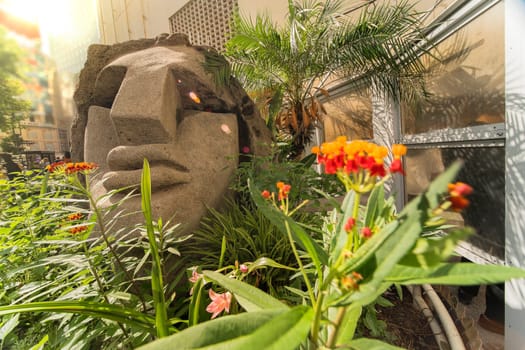
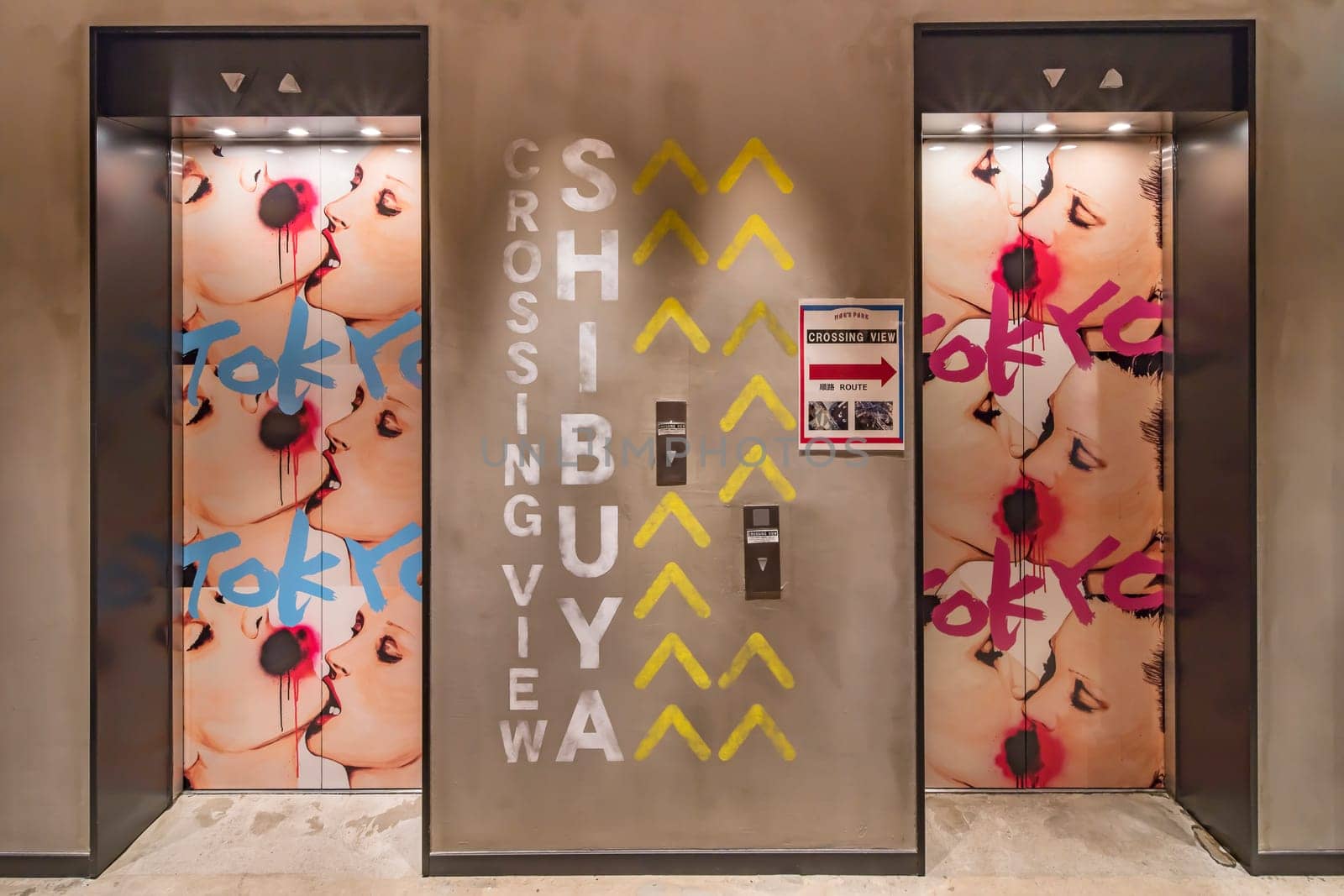
Elevator on the seventh floor of the 109 Mens building built in 1987 dedicated to men's fashion. This elevator covered with grafities illustrating the Tokyo fashion street leads to the Terrace Mag's Park renovated in 2018 which leads to Shibuya Crossing V
Editorial LicenseUsername
kuremoResolution
7531x5023pxElevator on the seventh floor of the 109 Mens building built in 1987 dedicated to men's fashion. This elevator covered with grafities illustrating the Tokyo fashion street leads to the Terrace Mag's Park renovated in 2018 which leads to Shibuya Crossing V

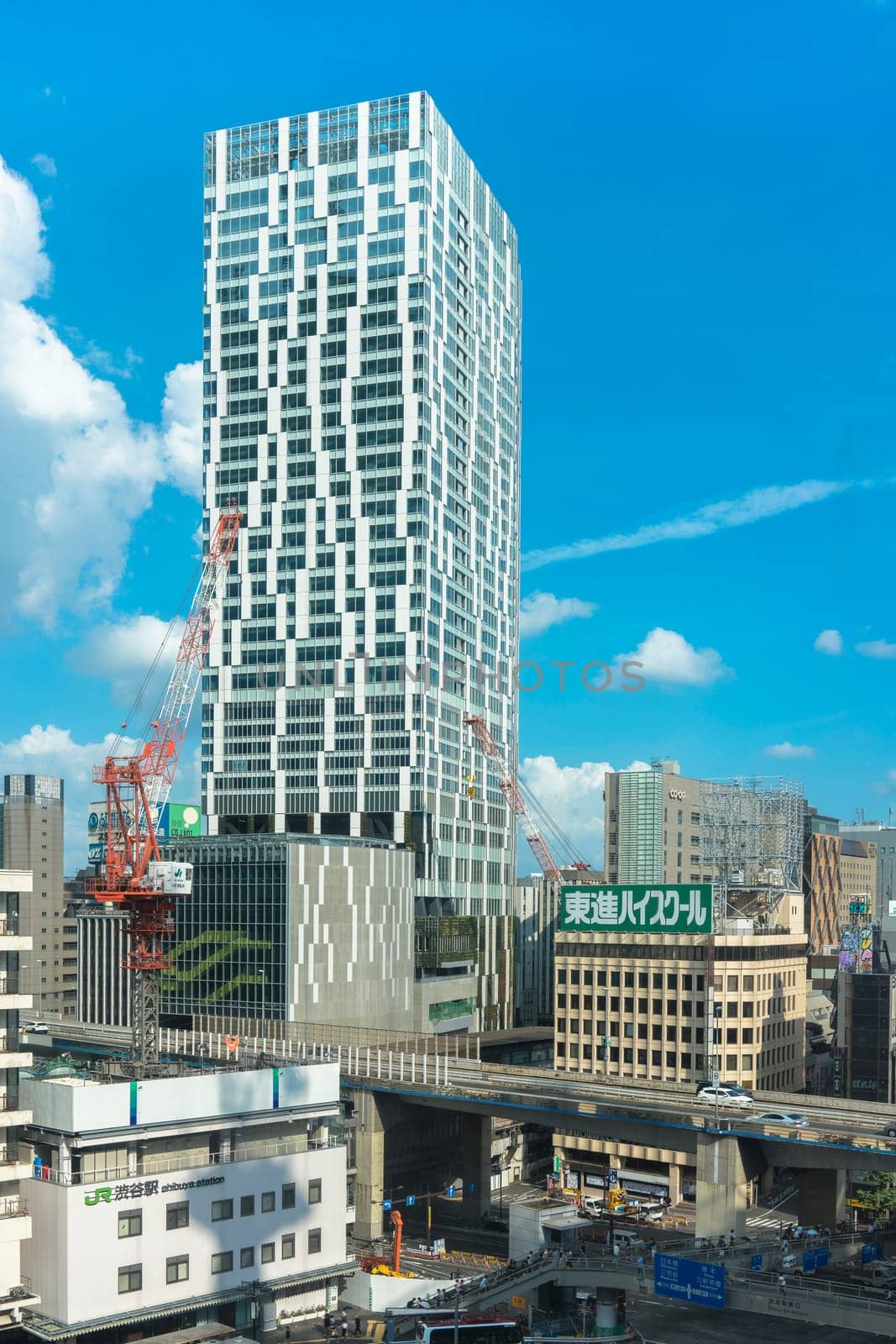
View of the southern exit of Shibuya Station, famous for its moai statue, with Shibuya Stream in the background, a new 180-meter building with offices, a hotel and a shopping gallery of thirty shops that will open their doors September 13, 2018.
Editorial LicenseUsername
kuremoResolution
5304x7952pxView of the southern exit of Shibuya Station, famous for its moai statue, with Shibuya Stream in the background, a new 180-meter building with offices, a hotel and a shopping gallery of thirty shops that will open their doors September 13, 2018.


Close-up on a statue of a Moai head surrounded by tropical flowers at the west exit of Shibuya Station in Tokyo, Japan.
Editorial LicenseUsername
kuremoResolution
5304x7952pxClose-up on a statue of a Moai head surrounded by tropical flowers at the west exit of Shibuya Station in Tokyo, Japan.
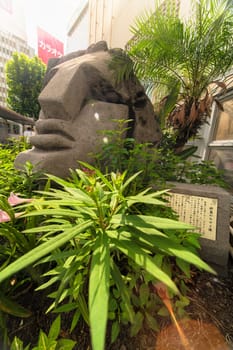
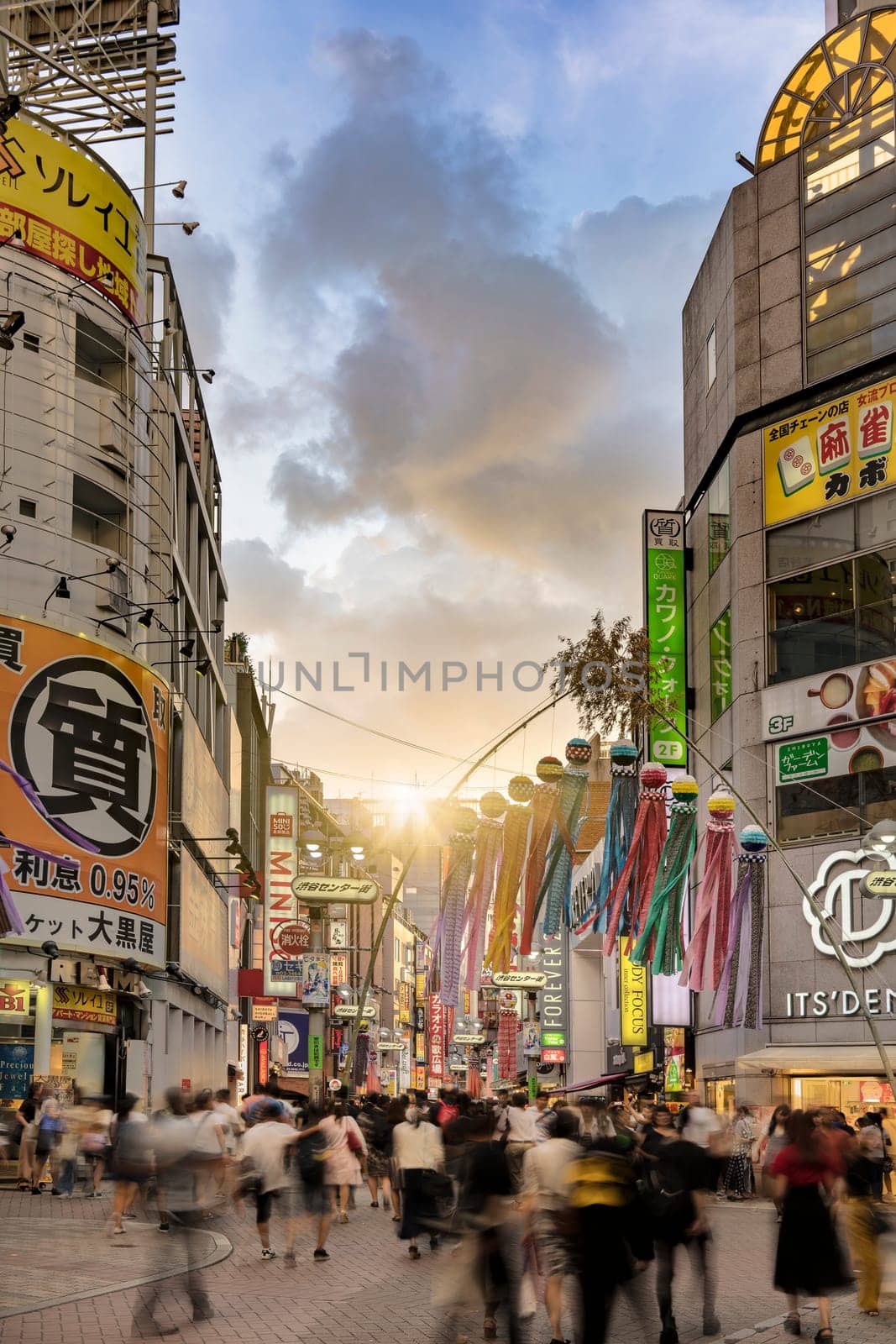
Sunset sky on Shibuya Center Gai Street which literally means Shibuya Central District. The busiest street once intersected with Shibuya Station, it stretches for 350 meters and incorporates the adjacent streets of Bunkamura, Inokashira and Utagawa into i
Editorial LicenseUsername
kuremoResolution
5304x7952pxSunset sky on Shibuya Center Gai Street which literally means Shibuya Central District. The busiest street once intersected with Shibuya Station, it stretches for 350 meters and incorporates the adjacent streets of Bunkamura, Inokashira and Utagawa into i

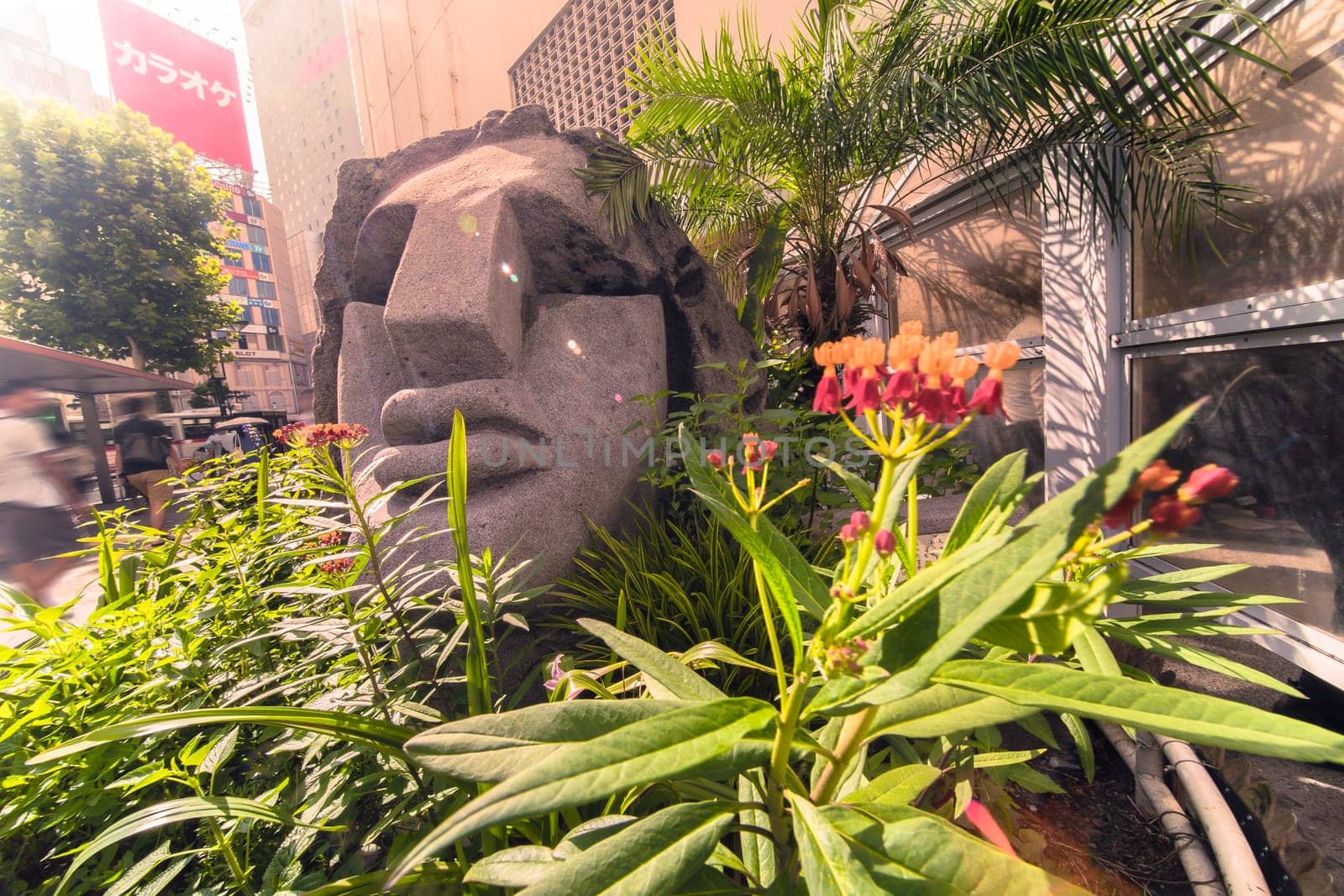
Close-up on a statue of a Moai head surrounded by tropical flowers at the west exit of Shibuya Station in Tokyo, Japan.
Editorial LicenseUsername
kuremoResolution
7952x5304pxClose-up on a statue of a Moai head surrounded by tropical flowers at the west exit of Shibuya Station in Tokyo, Japan.

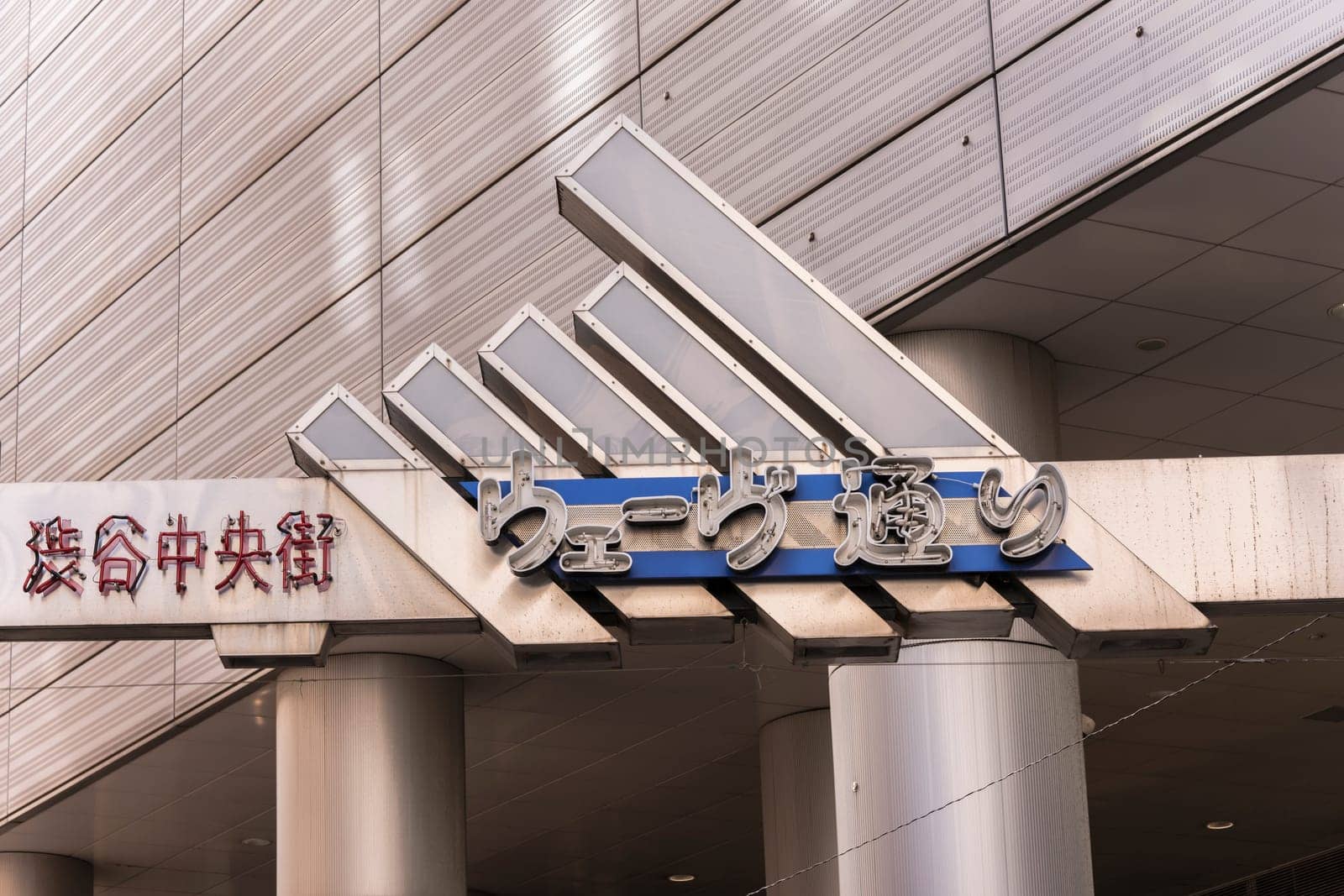
View of the portal of the Wave Street which marks the entrance to the Central District of Shibuya. It is located in front of the south exit of the shibuya station famous for its moai statue and runs along the south side of the Mark City building. The neig
Editorial LicenseUsername
kuremoResolution
7952x5304pxView of the portal of the Wave Street which marks the entrance to the Central District of Shibuya. It is located in front of the south exit of the shibuya station famous for its moai statue and runs along the south side of the Mark City building. The neig

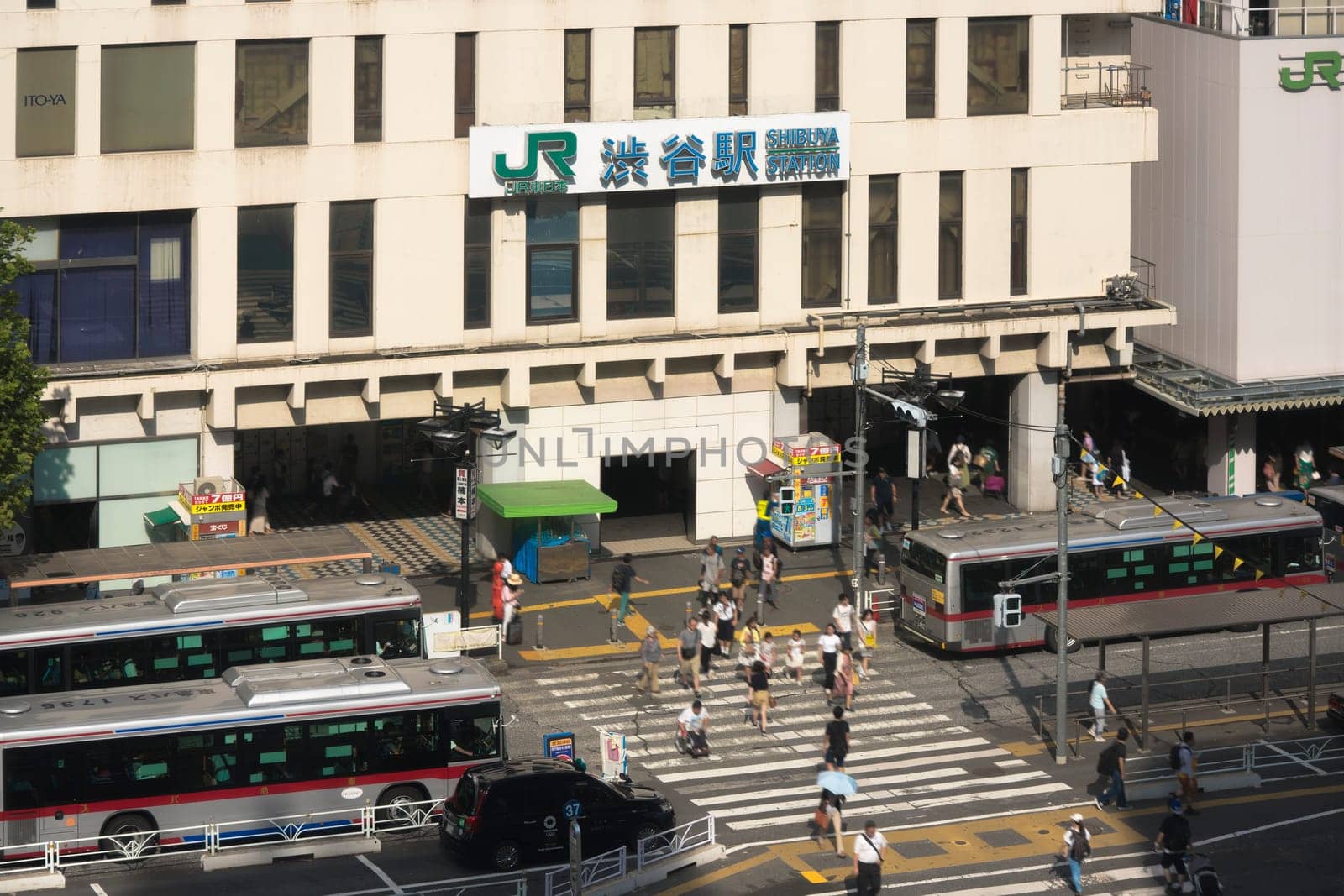
View of the southern exit of Shibuya Station, famous for its moai statue, with buses and taxis stopped at the bus terminal
Editorial LicenseUsername
kuremoResolution
7952x5304pxView of the southern exit of Shibuya Station, famous for its moai statue, with buses and taxis stopped at the bus terminal

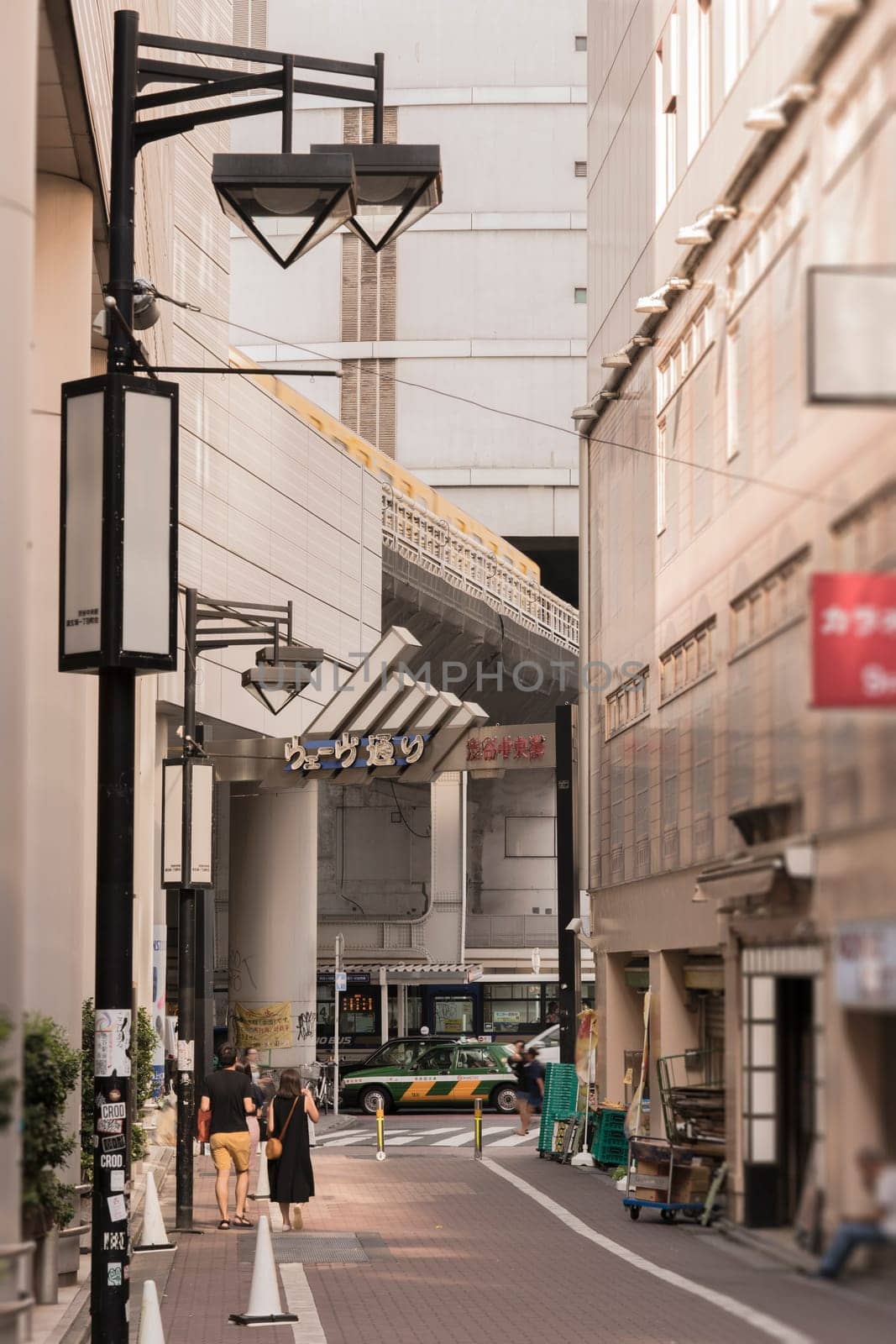
View of the portal of the Wave Street which marks the entrance to the Central District of Shibuya. It is located in front of the south exit of the shibuya station famous for its moai statue and runs along the south side of the Mark City building. The neig
Editorial LicenseUsername
kuremoResolution
5304x7952pxView of the portal of the Wave Street which marks the entrance to the Central District of Shibuya. It is located in front of the south exit of the shibuya station famous for its moai statue and runs along the south side of the Mark City building. The neig

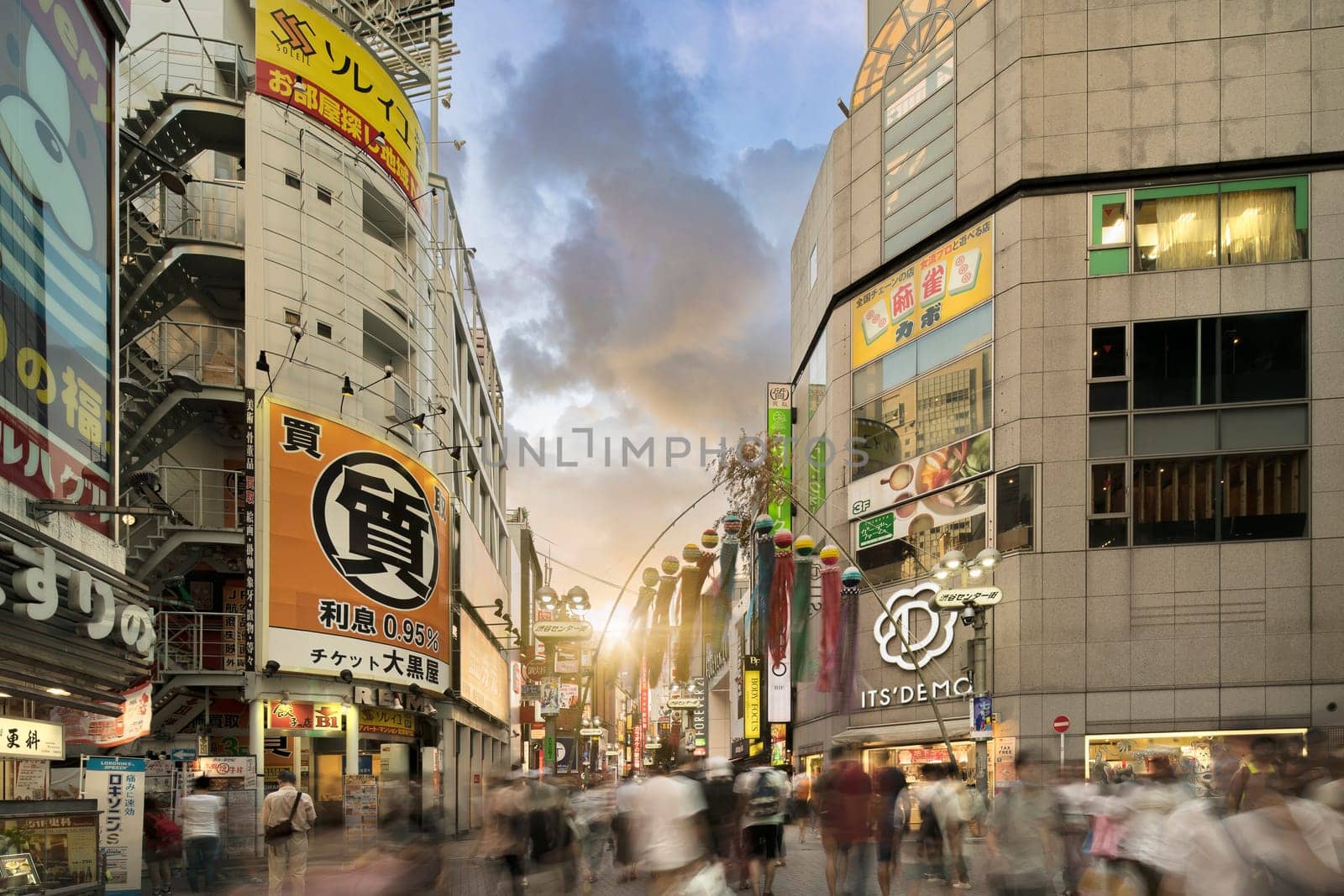
Sunset sky on Shibuya Center Gai Street which literally means Shibuya Central District. The busiest street once intersected with Shibuya Station, it stretches for 350 meters and incorporates the adjacent streets of Bunkamura, Inokashira and Utagawa into i
Editorial LicenseUsername
kuremoResolution
7952x5304pxSunset sky on Shibuya Center Gai Street which literally means Shibuya Central District. The busiest street once intersected with Shibuya Station, it stretches for 350 meters and incorporates the adjacent streets of Bunkamura, Inokashira and Utagawa into i

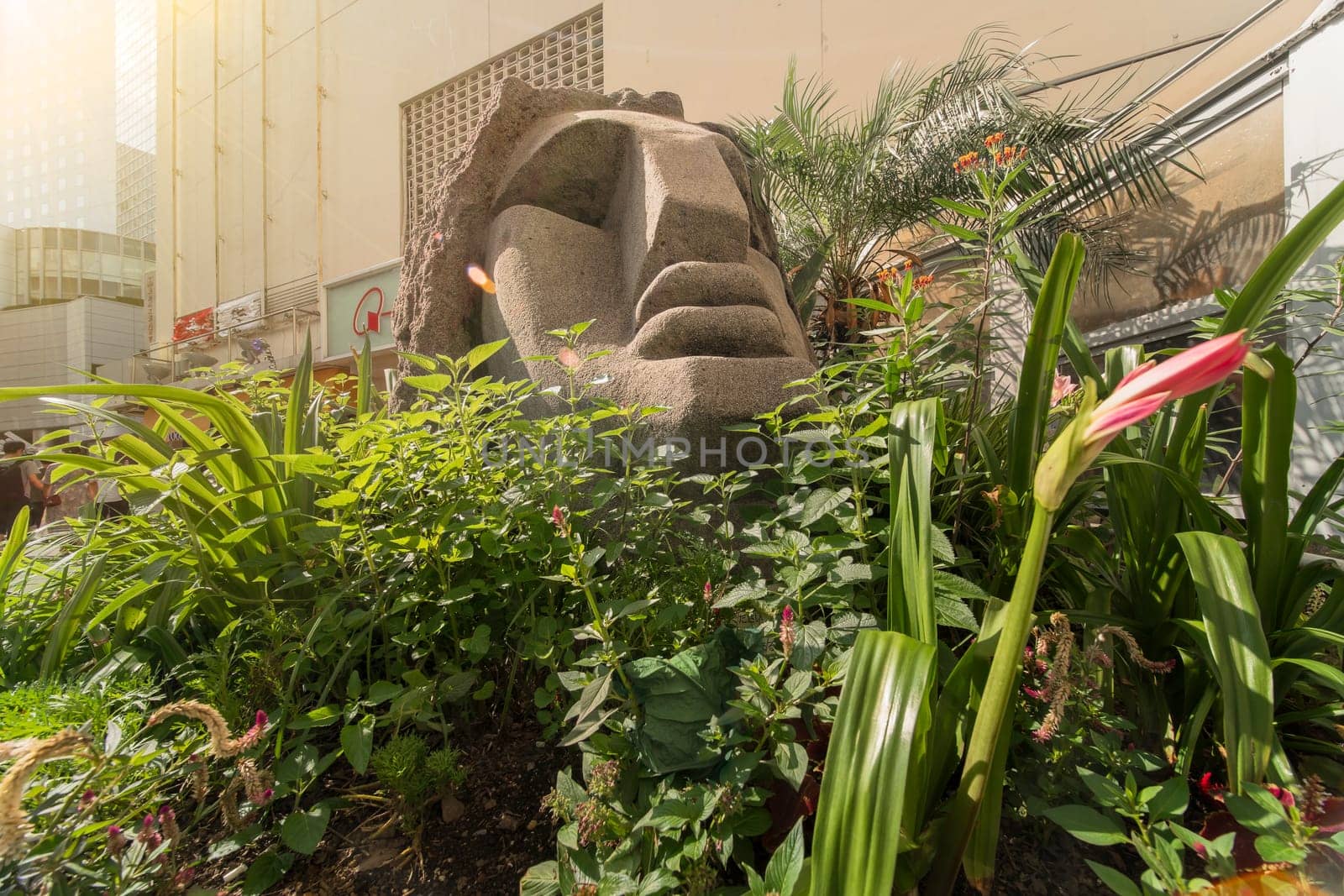
Close-up on a statue of a Moai head surrounded by tropical flowers at the west exit of Shibuya Station in Tokyo, Japan.
Editorial LicenseUsername
kuremoResolution
7952x5304pxClose-up on a statue of a Moai head surrounded by tropical flowers at the west exit of Shibuya Station in Tokyo, Japan.

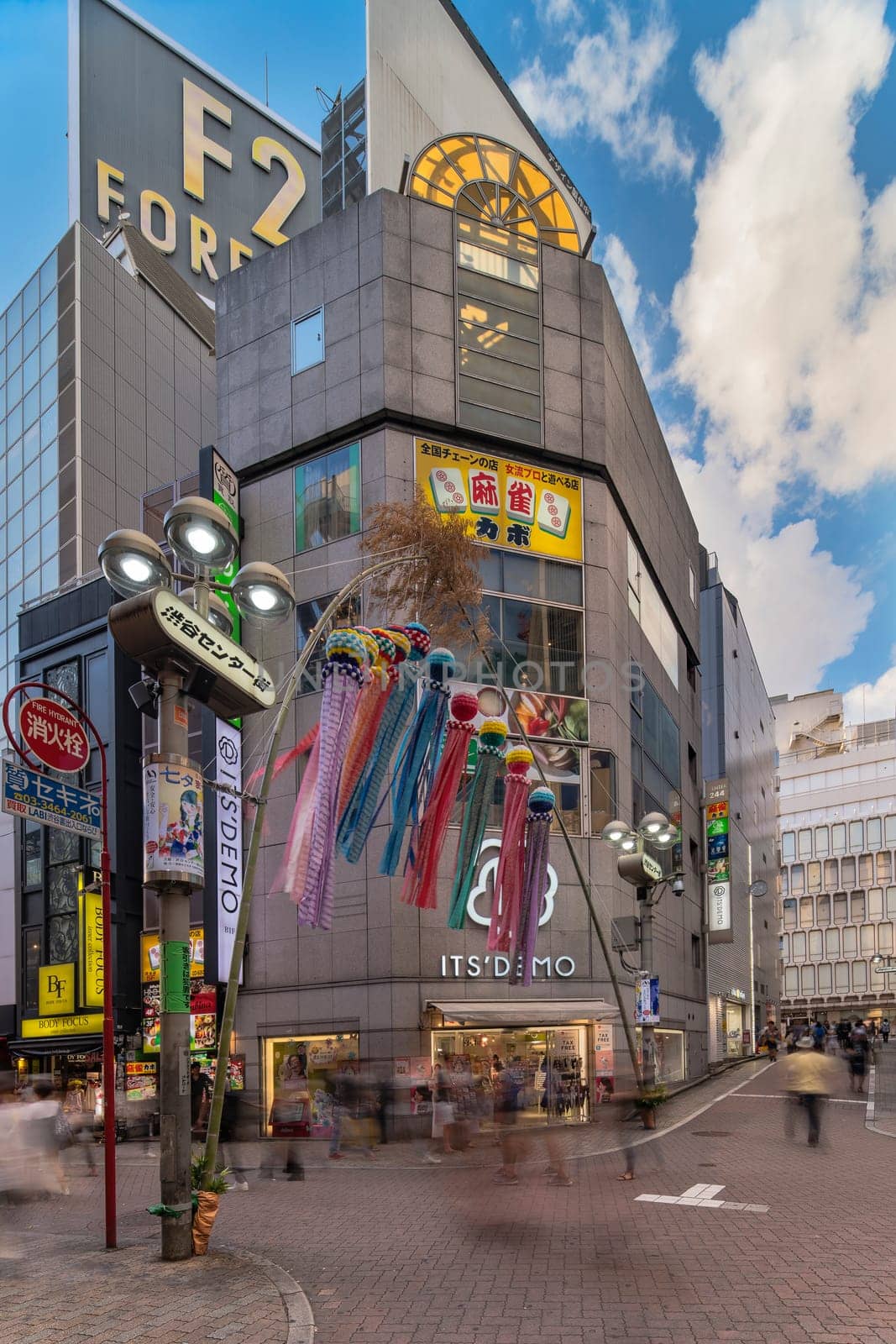
Summer blue sky on Shibuya Center Gai Street which literally means Shibuya Central District. The busiest street once intersected with Shibuya Station, it stretches for 350 meters and incorporates the adjacent streets of Bunkamura, Inokashira and Utagawa i
Editorial LicenseUsername
kuremoResolution
5304x7952pxSummer blue sky on Shibuya Center Gai Street which literally means Shibuya Central District. The busiest street once intersected with Shibuya Station, it stretches for 350 meters and incorporates the adjacent streets of Bunkamura, Inokashira and Utagawa i

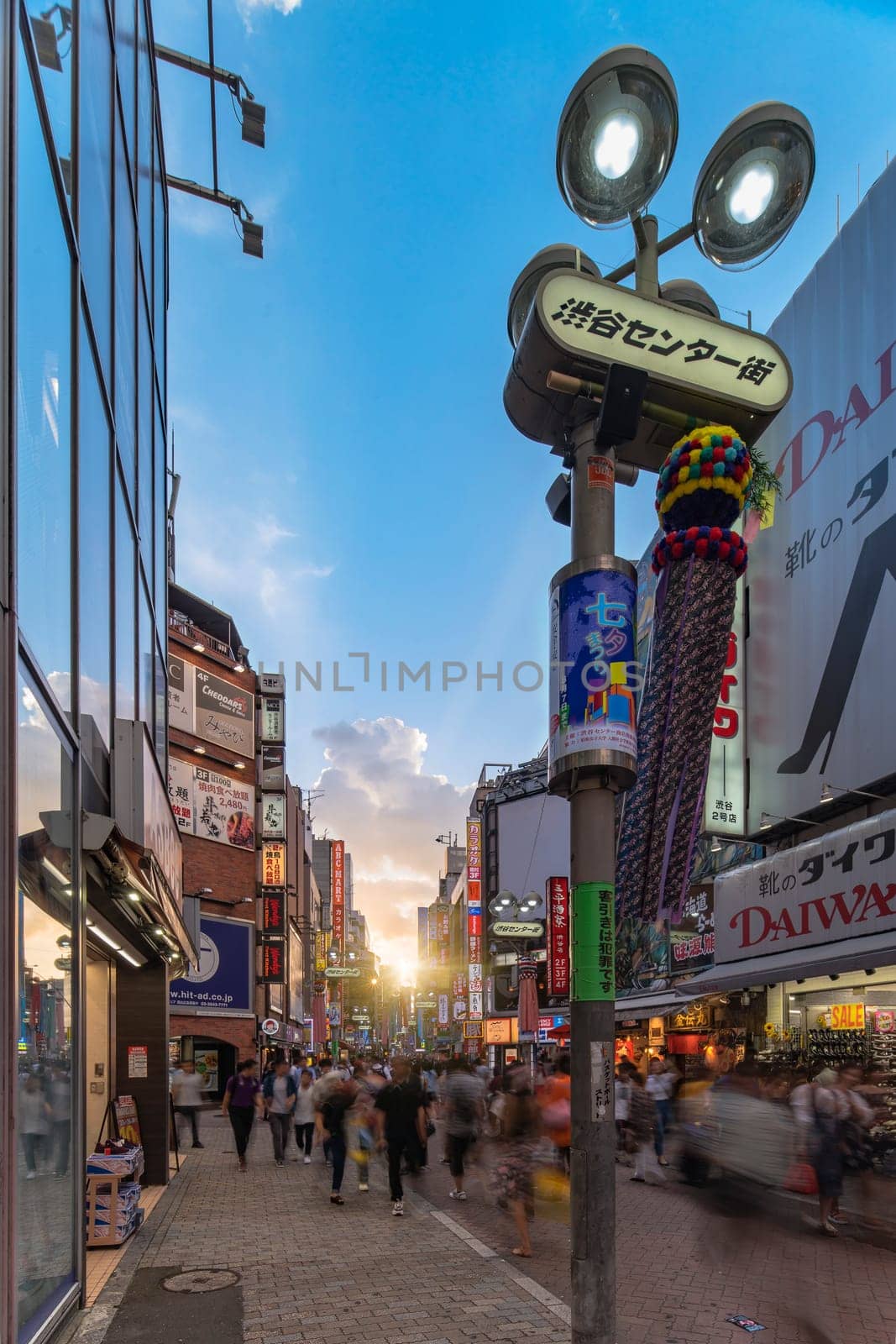
Sunset sky on Shibuya Center Gai Street which literally means Shibuya Central District. The busiest street once intersected with Shibuya Station, it stretches for 350 meters and incorporates the adjacent streets of Bunkamura, Inokashira and Utagawa into i
Editorial LicenseUsername
kuremoResolution
5304x7952pxSunset sky on Shibuya Center Gai Street which literally means Shibuya Central District. The busiest street once intersected with Shibuya Station, it stretches for 350 meters and incorporates the adjacent streets of Bunkamura, Inokashira and Utagawa into i

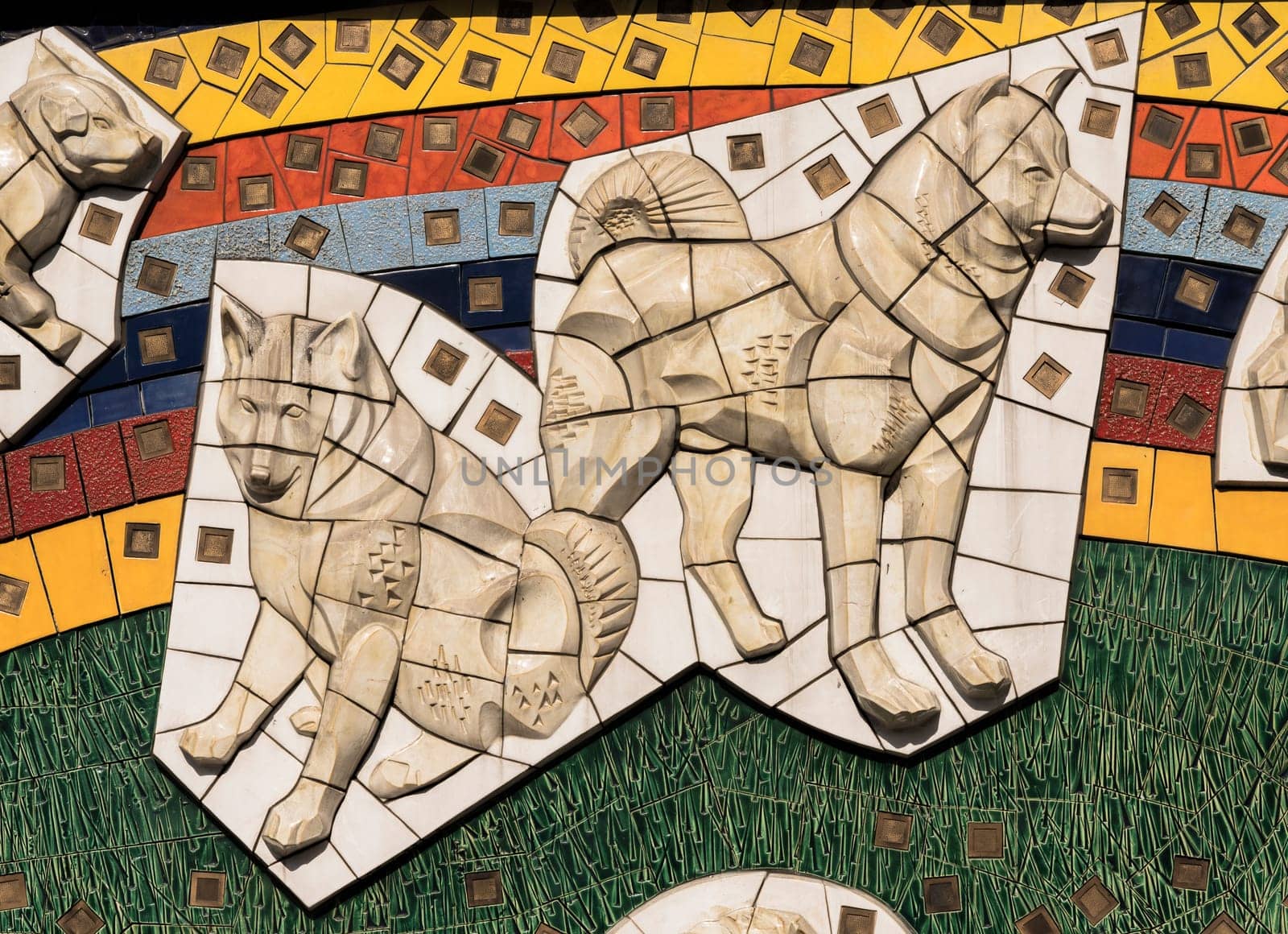
Large mural of the Shibuya station representing the dog Hachiko surrounded by twenty other akitaken dogs. Its size is 4 meters by 20 meters.
Editorial LicenseUsername
kuremoResolution
7611x5519pxLarge mural of the Shibuya station representing the dog Hachiko surrounded by twenty other akitaken dogs. Its size is 4 meters by 20 meters.


Close-up on a statue of a Moai head surrounded by tropical flowers at the west exit of Shibuya Station in Tokyo, Japan.
Editorial LicenseUsername
kuremoResolution
5319x7721pxClose-up on a statue of a Moai head surrounded by tropical flowers at the west exit of Shibuya Station in Tokyo, Japan.
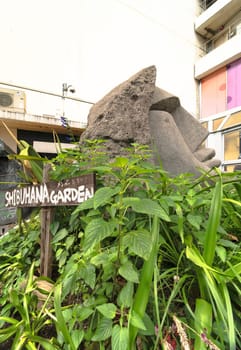
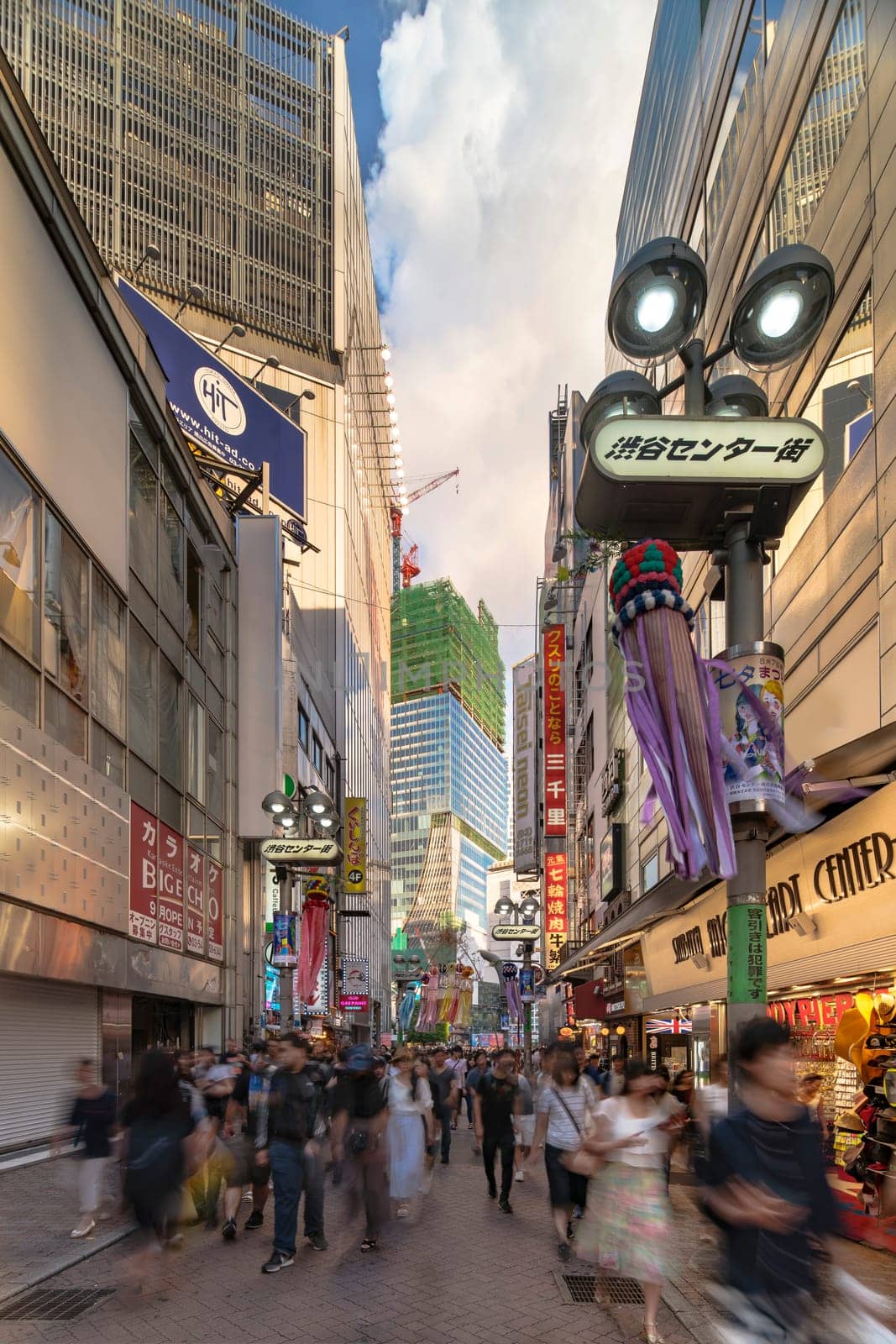
Summer blue sky on Shibuya Center Gai Street which literally means Shibuya Central District. The busiest street once intersected with Shibuya Station, it stretches for 350 meters and incorporates the adjacent streets of Bunkamura, Inokashira and Utagawa i
Editorial LicenseUsername
kuremoResolution
5304x7952pxSummer blue sky on Shibuya Center Gai Street which literally means Shibuya Central District. The busiest street once intersected with Shibuya Station, it stretches for 350 meters and incorporates the adjacent streets of Bunkamura, Inokashira and Utagawa i

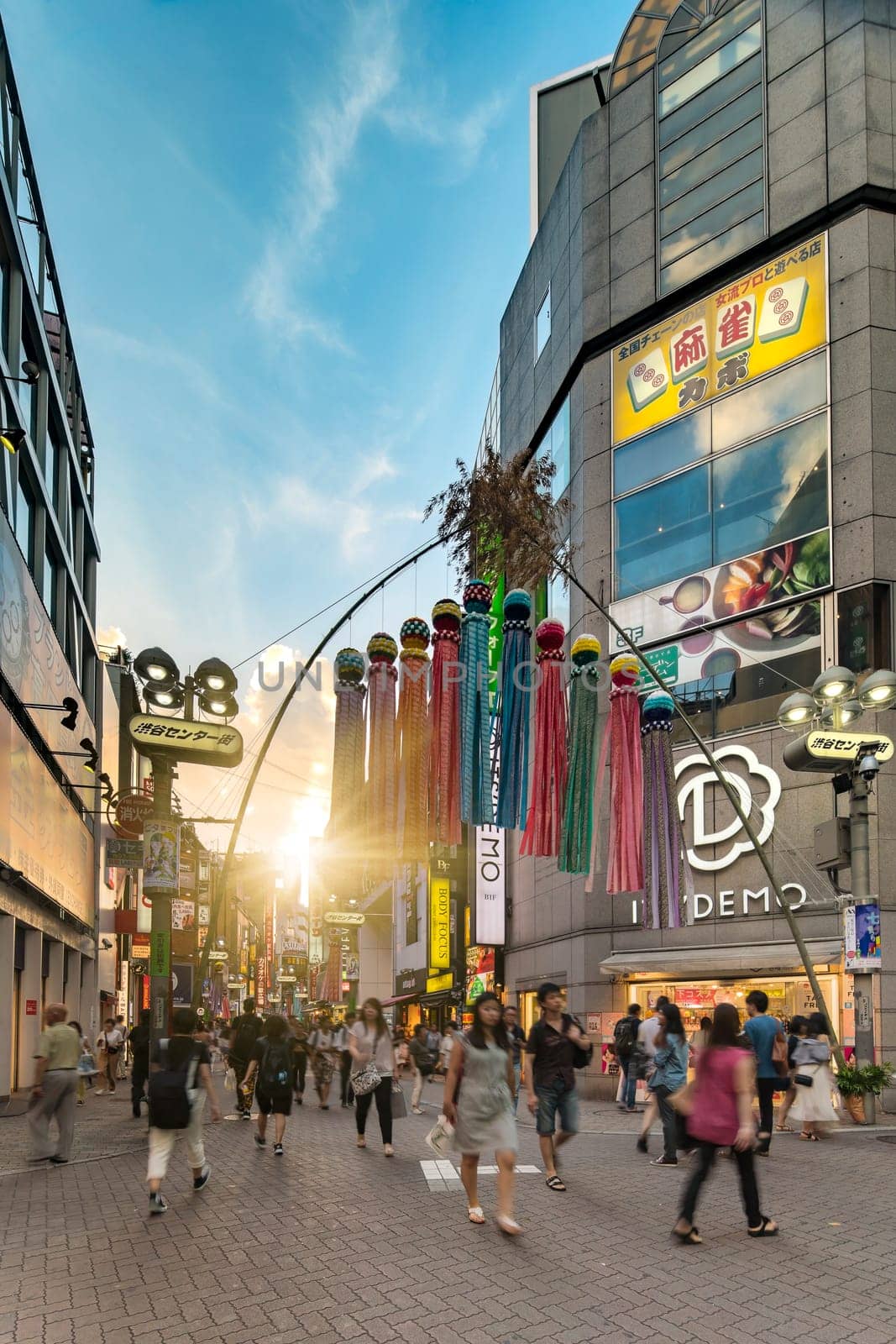
Sunset sky on Shibuya Center Gai Street which literally means Shibuya Central District. The busiest street once intersected with Shibuya Station, it stretches for 350 meters and incorporates the adjacent streets of Bunkamura, Inokashira and Utagawa into i
Editorial LicenseUsername
kuremoResolution
5304x7952pxSunset sky on Shibuya Center Gai Street which literally means Shibuya Central District. The busiest street once intersected with Shibuya Station, it stretches for 350 meters and incorporates the adjacent streets of Bunkamura, Inokashira and Utagawa into i

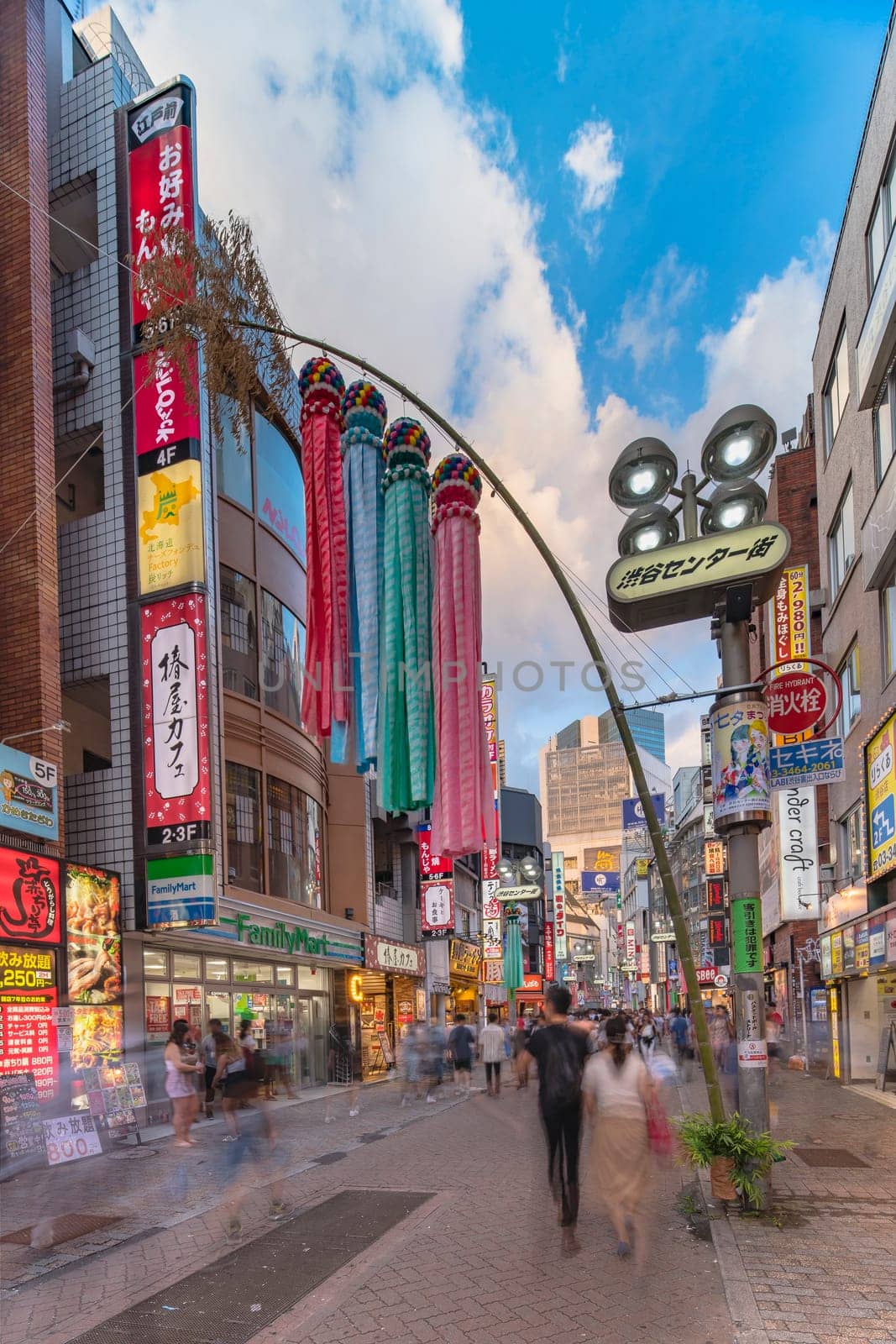
Summer blue sky on Shibuya Center Gai Street which literally means Shibuya Central District. The busiest street once intersected with Shibuya Station, it stretches for 350 meters and incorporates the adjacent streets of Bunkamura, Inokashira and Utagawa i
Editorial LicenseUsername
kuremoResolution
5304x7952pxSummer blue sky on Shibuya Center Gai Street which literally means Shibuya Central District. The busiest street once intersected with Shibuya Station, it stretches for 350 meters and incorporates the adjacent streets of Bunkamura, Inokashira and Utagawa i

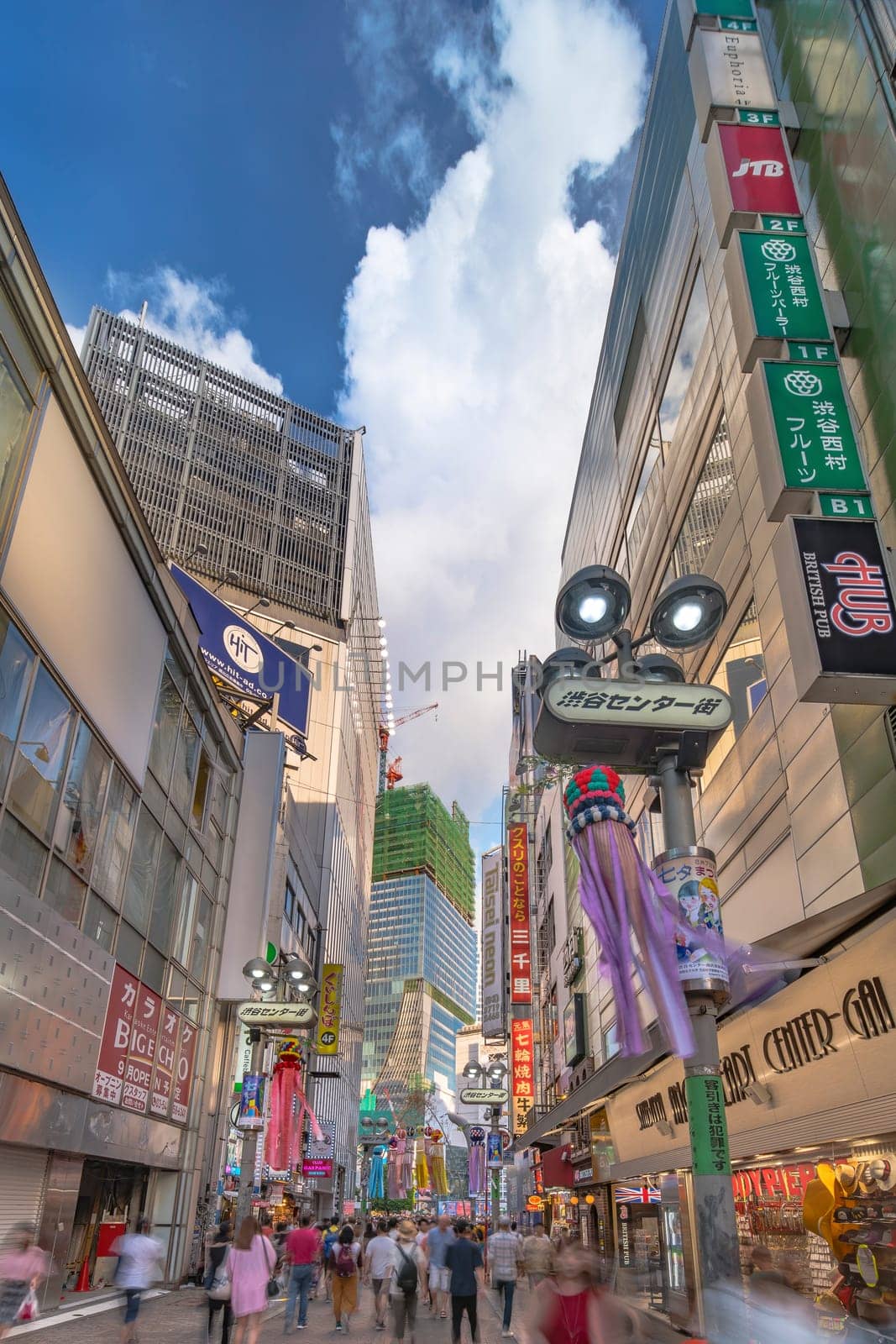
Summer blue sky on Shibuya Center Gai Street which literally means Shibuya Central District. The busiest street once intersected with Shibuya Station, it stretches for 350 meters and incorporates the adjacent streets of Bunkamura, Inokashira and Utagawa i
Editorial LicenseUsername
kuremoResolution
5304x7952pxSummer blue sky on Shibuya Center Gai Street which literally means Shibuya Central District. The busiest street once intersected with Shibuya Station, it stretches for 350 meters and incorporates the adjacent streets of Bunkamura, Inokashira and Utagawa i

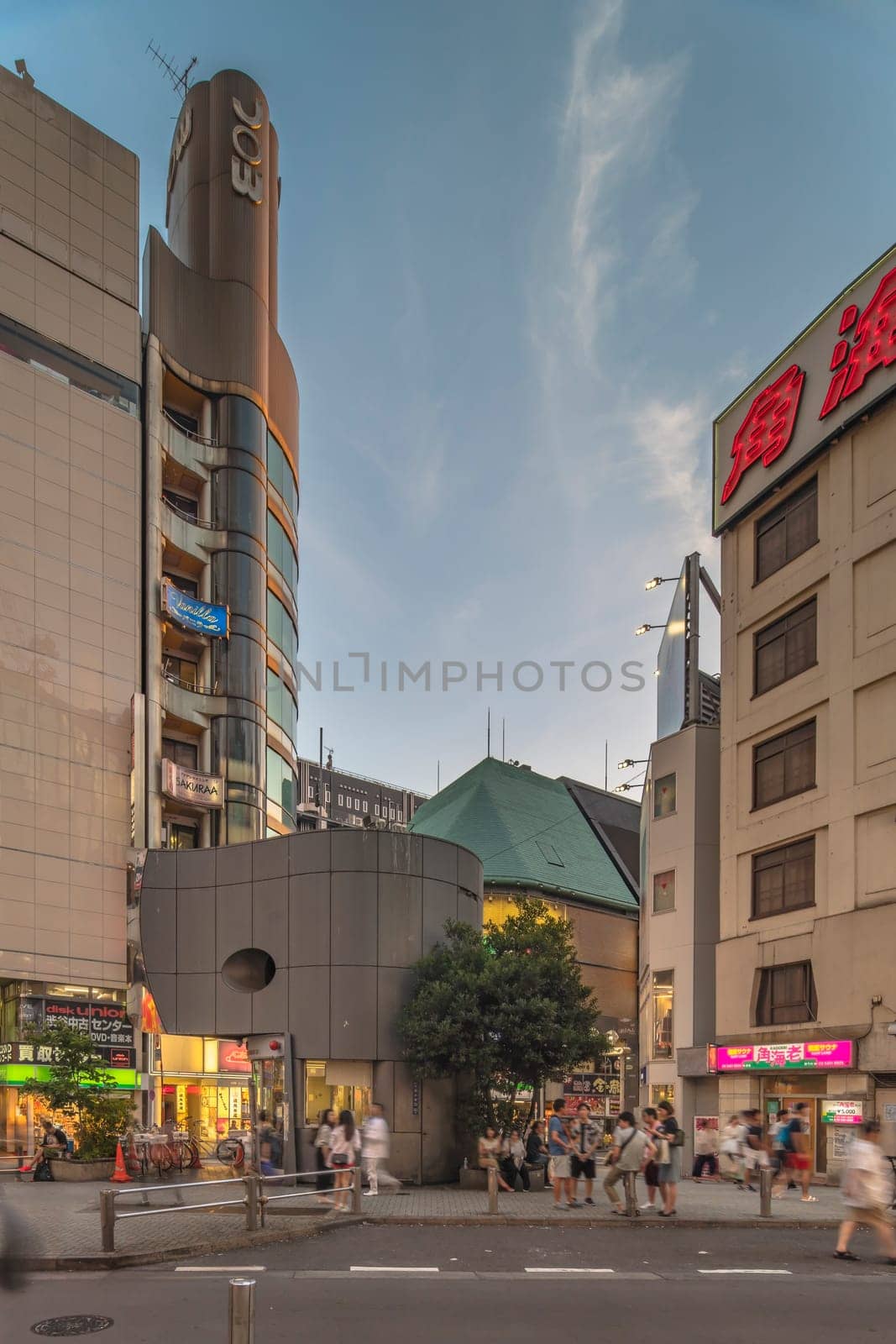
Sunset sky on Shibuya Police Station Udagawa Kōban in the Inokashira Steet of Shibuya Center Gai which literally means Shibuya Central District. The busiest street once intersected with Shibuya Station, it stretches for 350 meters and incorporates the ad
Editorial LicenseUsername
kuremoResolution
4850x7271pxSunset sky on Shibuya Police Station Udagawa Kōban in the Inokashira Steet of Shibuya Center Gai which literally means Shibuya Central District. The busiest street once intersected with Shibuya Station, it stretches for 350 meters and incorporates the ad


Sunset sky on Shibuya Police Station Udagawa Kōban in the Inokashira Steet of Shibuya Center Gai which literally means Shibuya Central District. The busiest street once intersected with Shibuya Station, it stretches for 350 meters and incorporates the ad
Editorial LicenseUsername
kuremoResolution
5304x7952pxSunset sky on Shibuya Police Station Udagawa Kōban in the Inokashira Steet of Shibuya Center Gai which literally means Shibuya Central District. The busiest street once intersected with Shibuya Station, it stretches for 350 meters and incorporates the ad

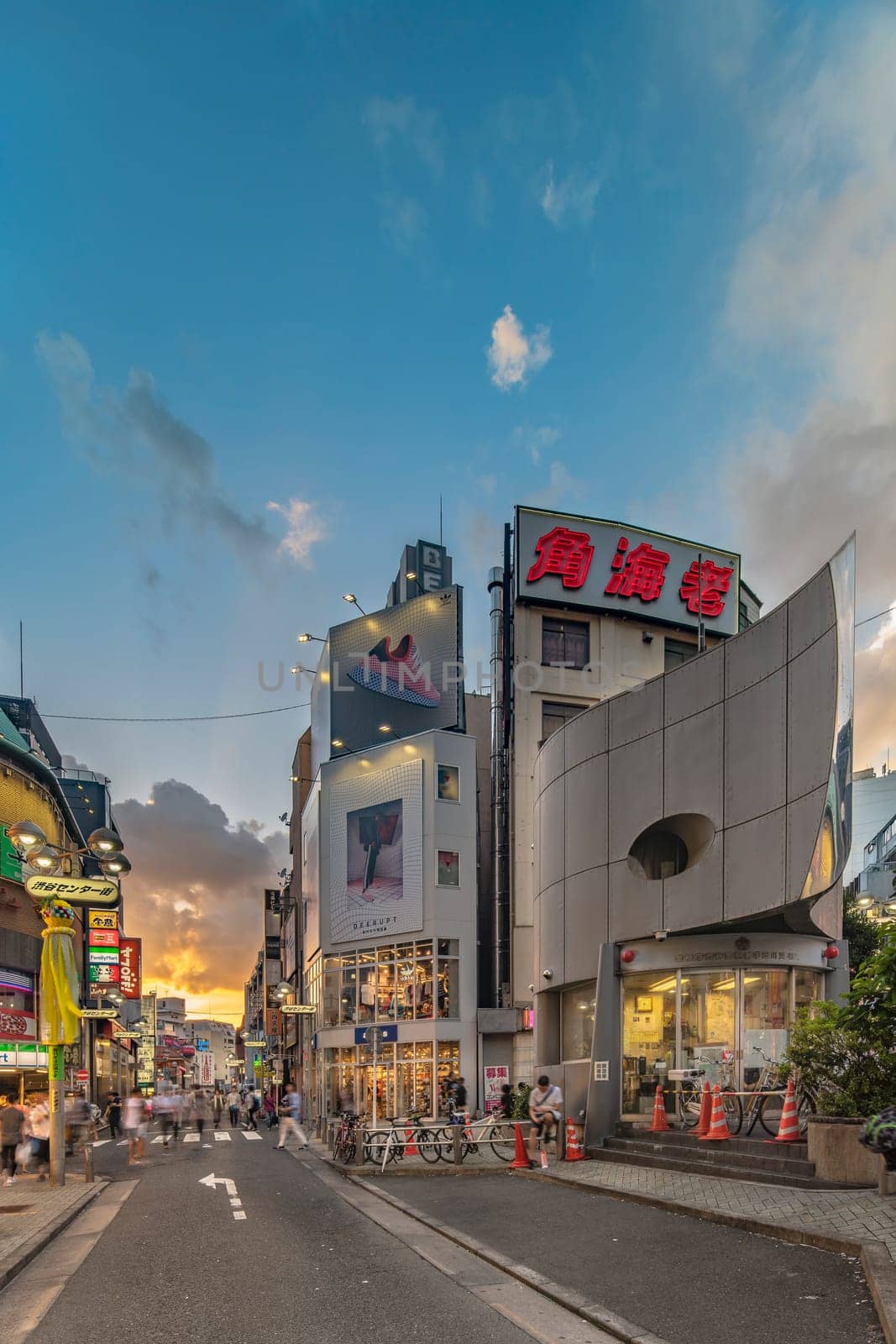
Sunset sky on Shibuya Police Station Udagawa Kōban in the Inokashira Steet of Shibuya Center Gai which literally means Shibuya Central District. The busiest street once intersected with Shibuya Station, it stretches for 350 meters and incorporates the ad
Editorial LicenseUsername
kuremoResolution
5304x7952pxSunset sky on Shibuya Police Station Udagawa Kōban in the Inokashira Steet of Shibuya Center Gai which literally means Shibuya Central District. The busiest street once intersected with Shibuya Station, it stretches for 350 meters and incorporates the ad


Champagne flute and bottle of sparkling wine with pink garland decoration for a wedding anniversary party.
Stock PhotoUsername
kuremoResolution
5304x7952pxChampagne flute and bottle of sparkling wine with pink garland decoration for a wedding anniversary party.


Red maraca in karaoke club, with champagne bottle and couple of sparkling wine glasses, yellow tambourine and screen for singing music on romantic stage party.
Stock PhotoUsername
kuremoResolution
7952x5304pxRed maraca in karaoke club, with champagne bottle and couple of sparkling wine glasses, yellow tambourine and screen for singing music on romantic stage party.


Romantic couple of champagne flutes and bottle of sparkling wine with pink garland decoration for a wedding anniversary party.
Stock PhotoUsername
kuremoResolution
7952x5304pxRomantic couple of champagne flutes and bottle of sparkling wine with pink garland decoration for a wedding anniversary party.


Close-up of a man's hand holding a black microphone on an orange background.
Stock PhotoUsername
kuremoResolution
7952x5304pxClose-up of a man's hand holding a black microphone on an orange background.


Close-up of a man's hand holding a black microphone on an orange background.
Stock PhotoUsername
kuremoResolution
7952x5304pxClose-up of a man's hand holding a black microphone on an orange background.


Black microphone in karaoke club, with remote controller, melon and strawberry soda drinks, yellow tambourine and screen for singing music on stage party.
Stock PhotoUsername
kuremoResolution
7701x5212pxBlack microphone in karaoke club, with remote controller, melon and strawberry soda drinks, yellow tambourine and screen for singing music on stage party.


Black microphone in Japanese karaoke club, with remote controller, soda drinks and TV screen for singing music on stage party.
Stock PhotoUsername
kuremoResolution
5121x7976pxBlack microphone in Japanese karaoke club, with remote controller, soda drinks and TV screen for singing music on stage party.
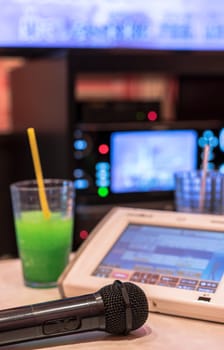

Close-up of a man's hand holding a yellow tambarine on an orange background.
Stock PhotoUsername
kuremoResolution
7952x5304pxClose-up of a man's hand holding a yellow tambarine on an orange background.


Black microphone in karaoke club, with champagne wine bottle and couple sparkling glass with heart shape and screen in background for singing music on stage party.
Stock PhotoUsername
kuremoResolution
5304x7952pxBlack microphone in karaoke club, with champagne wine bottle and couple sparkling glass with heart shape and screen in background for singing music on stage party.


Close-up of a man's hand holding a red maraca on an orange background.
Stock PhotoUsername
kuremoResolution
7952x5304pxClose-up of a man's hand holding a red maraca on an orange background.


Black microphone in karaoke club, with remote controller, melon and strawberry soda drinks, yellow tambourine and screen for singing music on stage party.
Stock PhotoUsername
kuremoResolution
5159x7734pxBlack microphone in karaoke club, with remote controller, melon and strawberry soda drinks, yellow tambourine and screen for singing music on stage party.


Black microphone in karaoke club, with remote controller, melon and strawberry soda drinks, yellow tambourine for singing music on stage party.
Stock PhotoUsername
kuremoResolution
7952x5304pxBlack microphone in karaoke club, with remote controller, melon and strawberry soda drinks, yellow tambourine for singing music on stage party.

